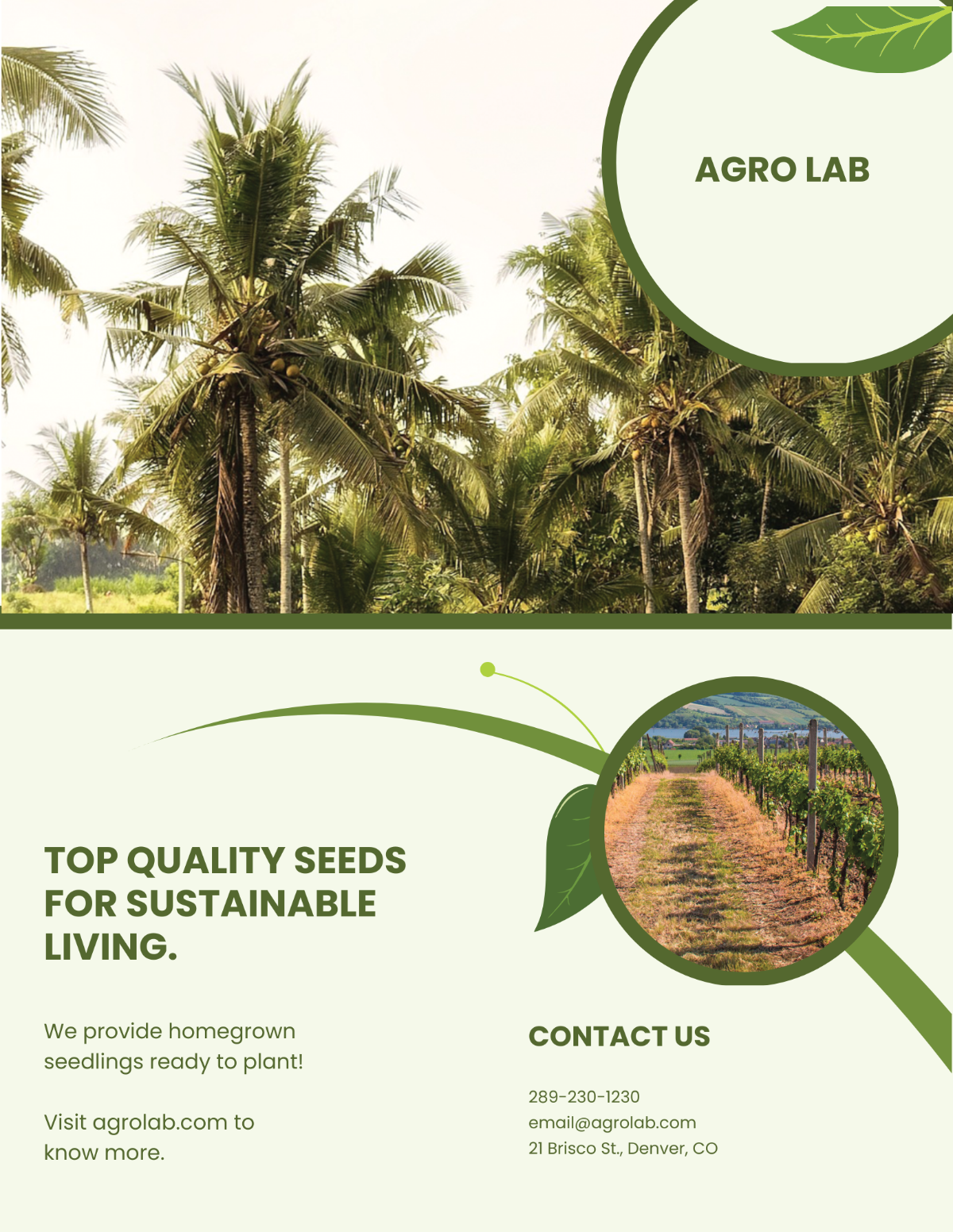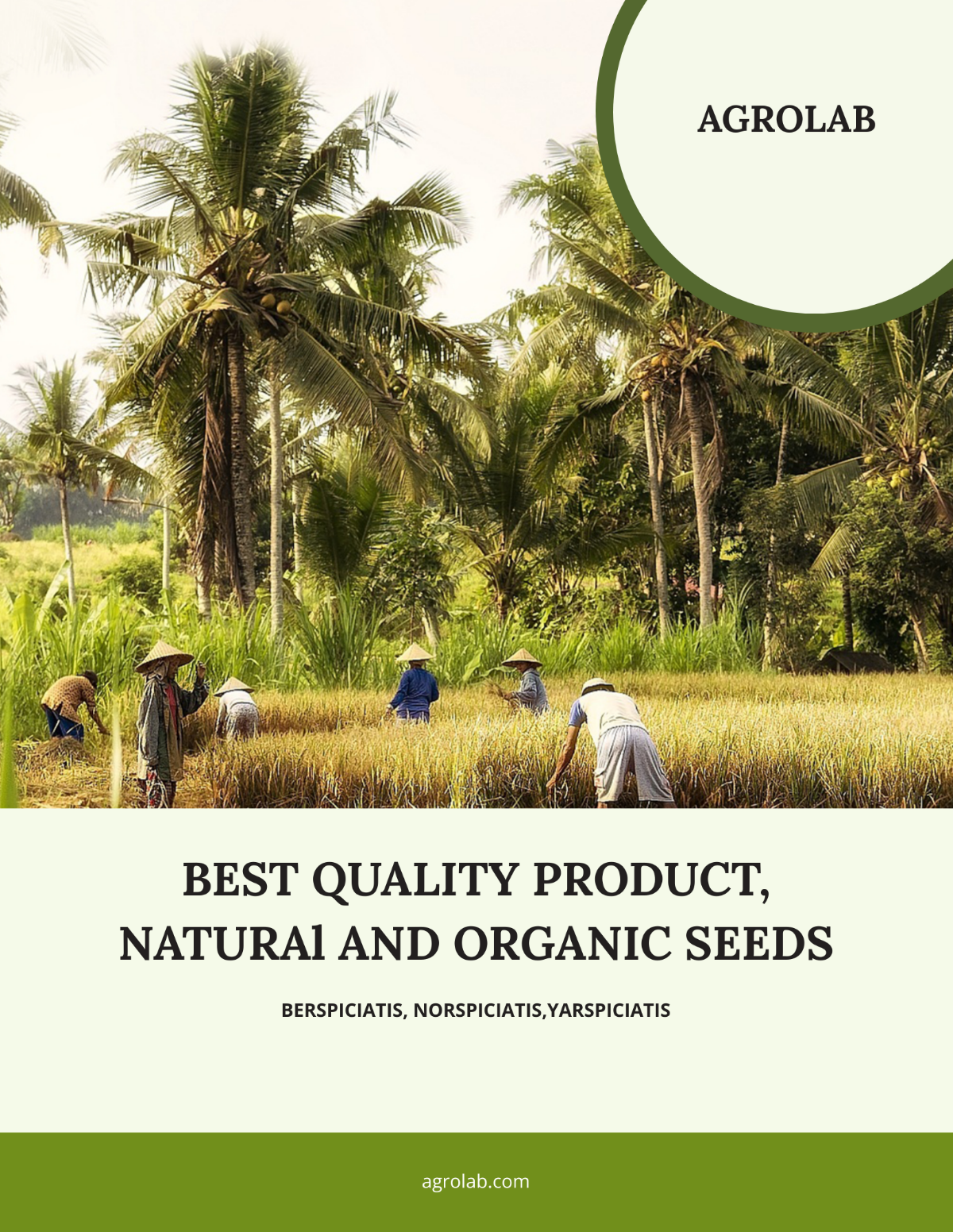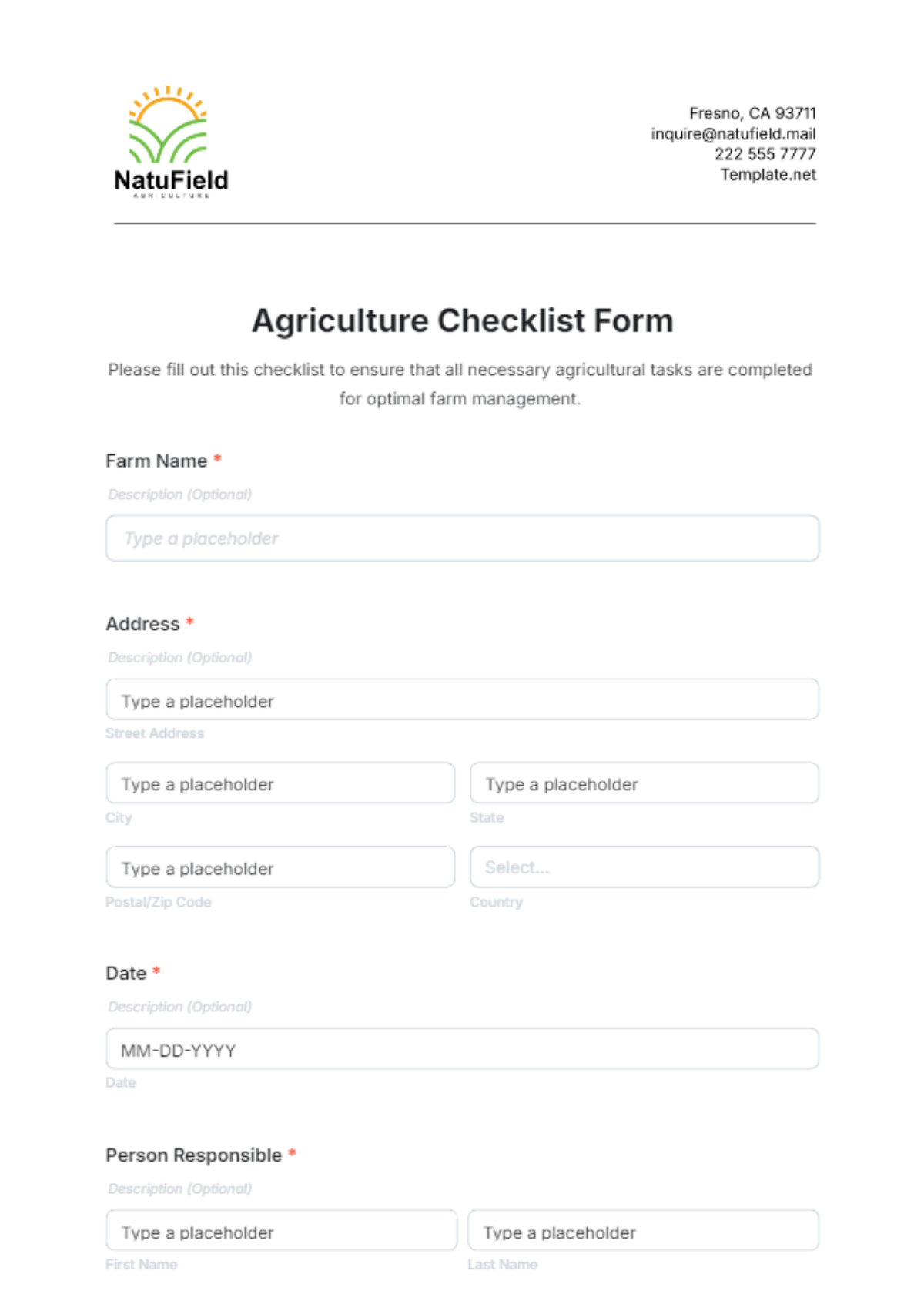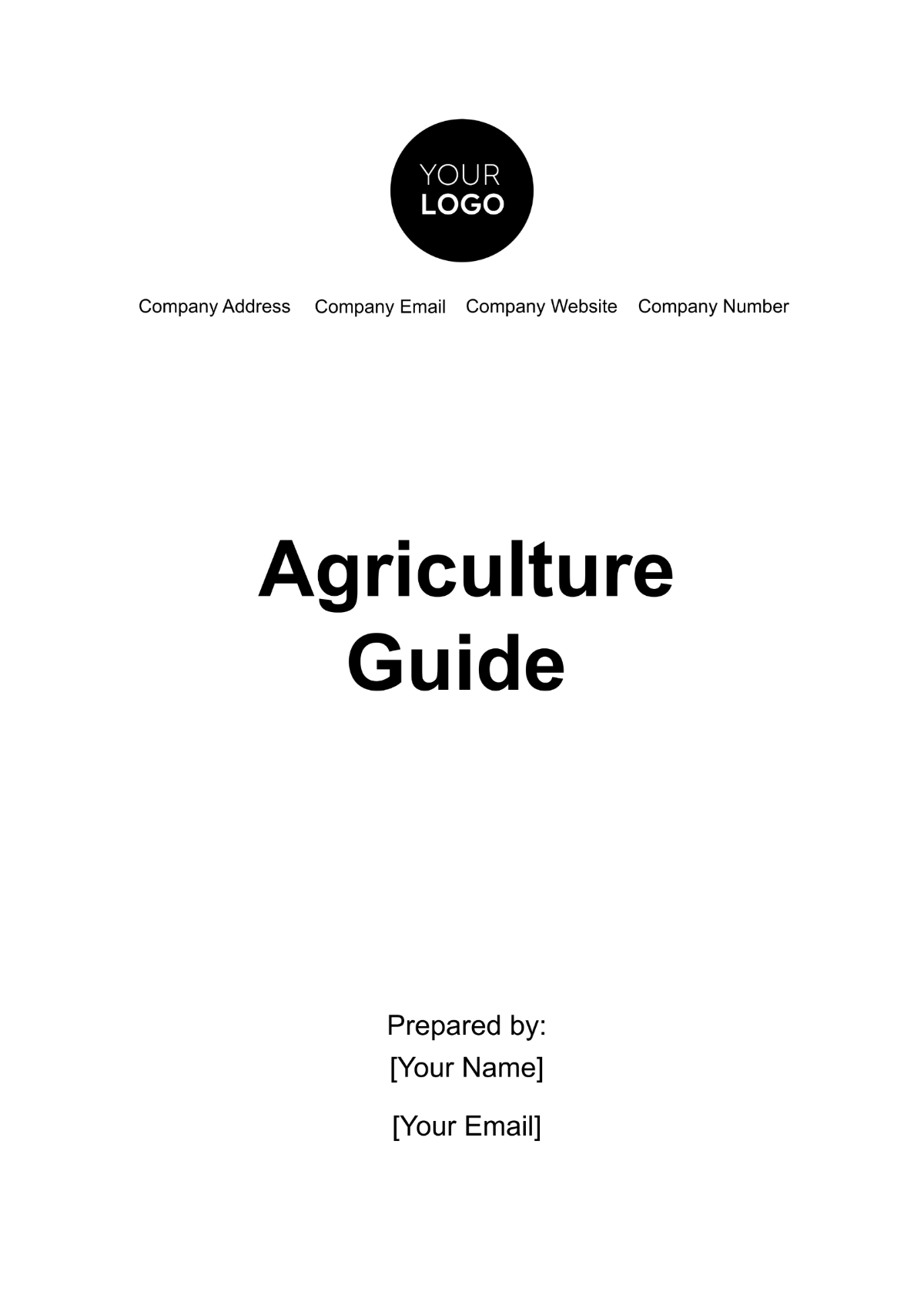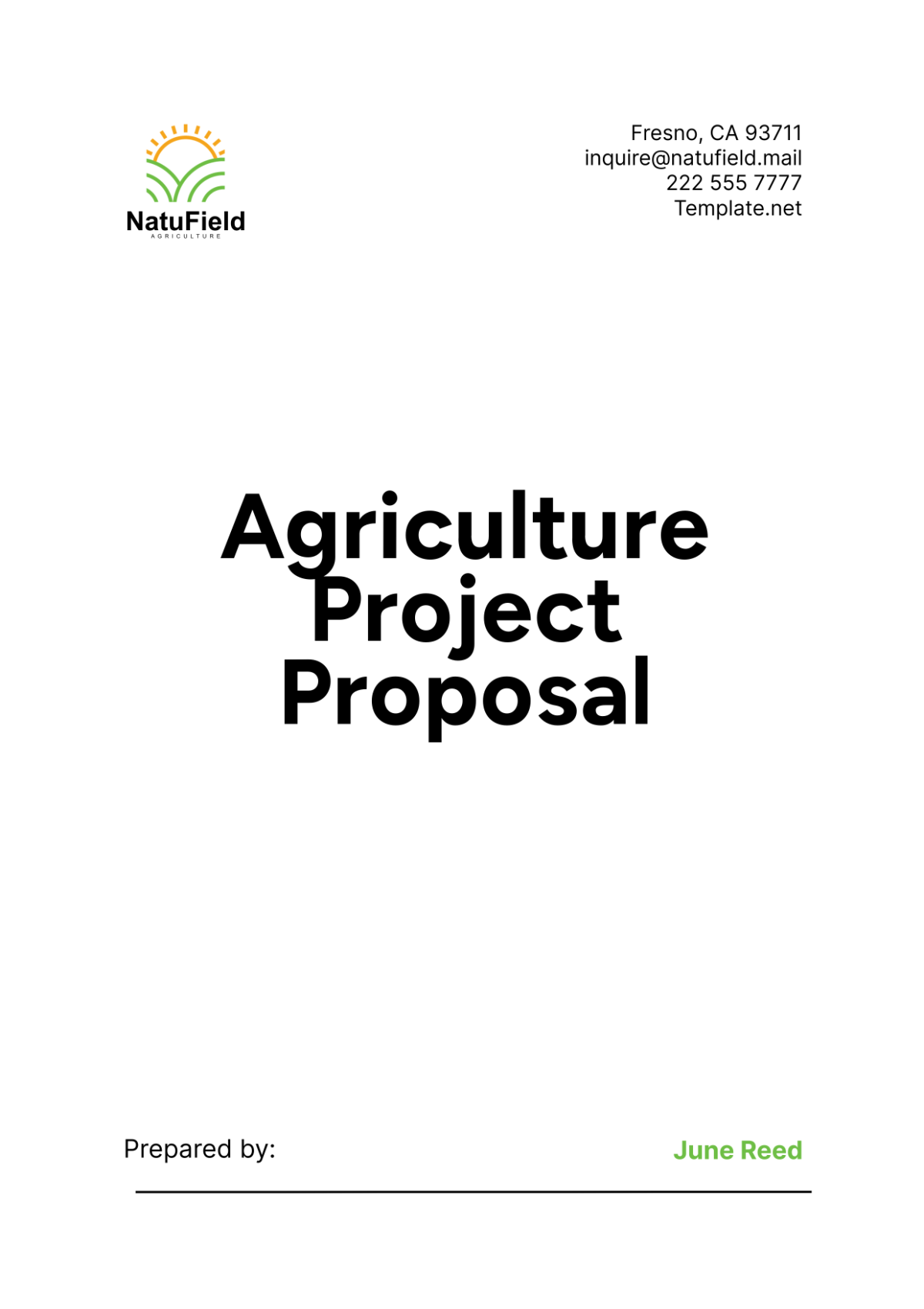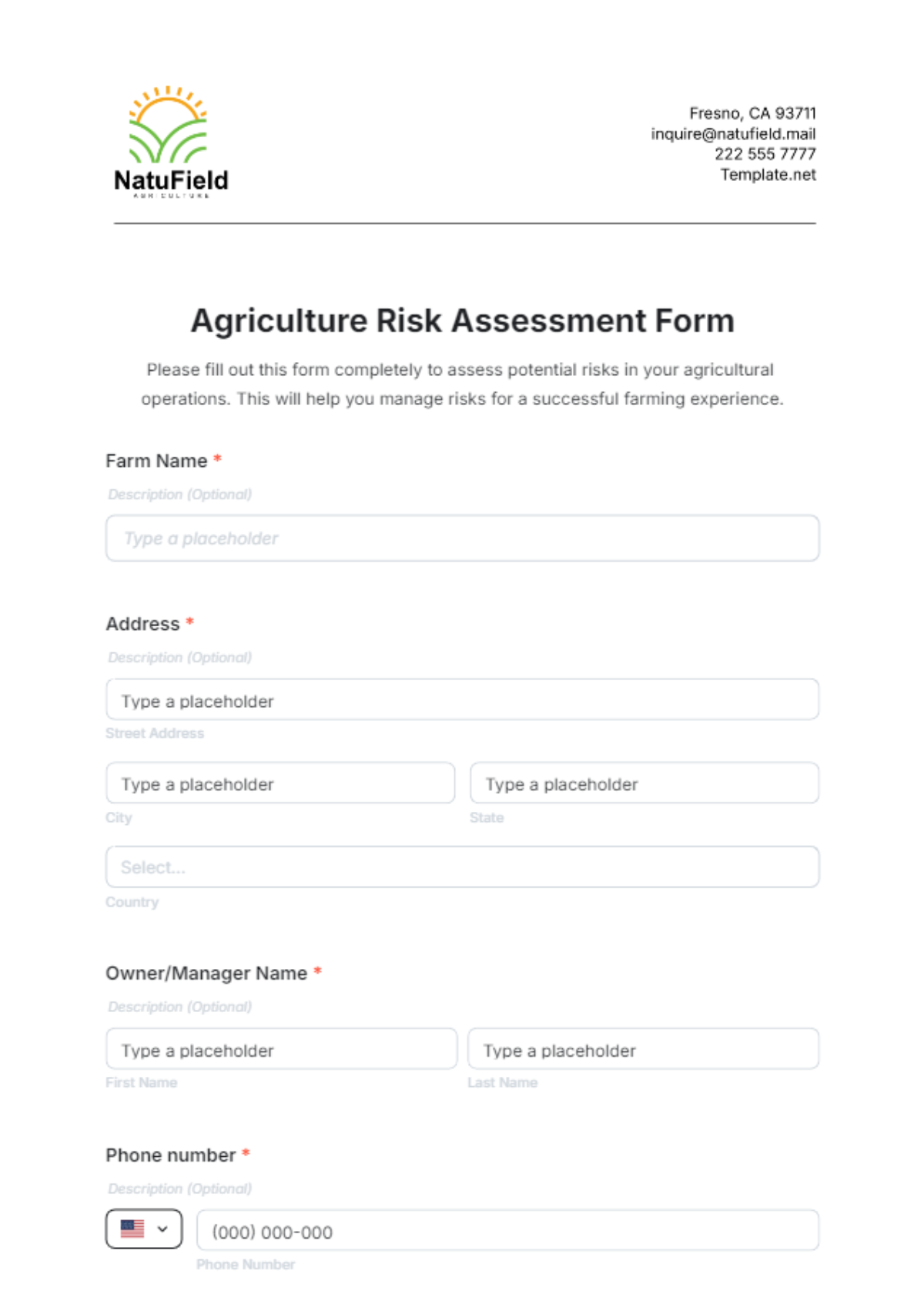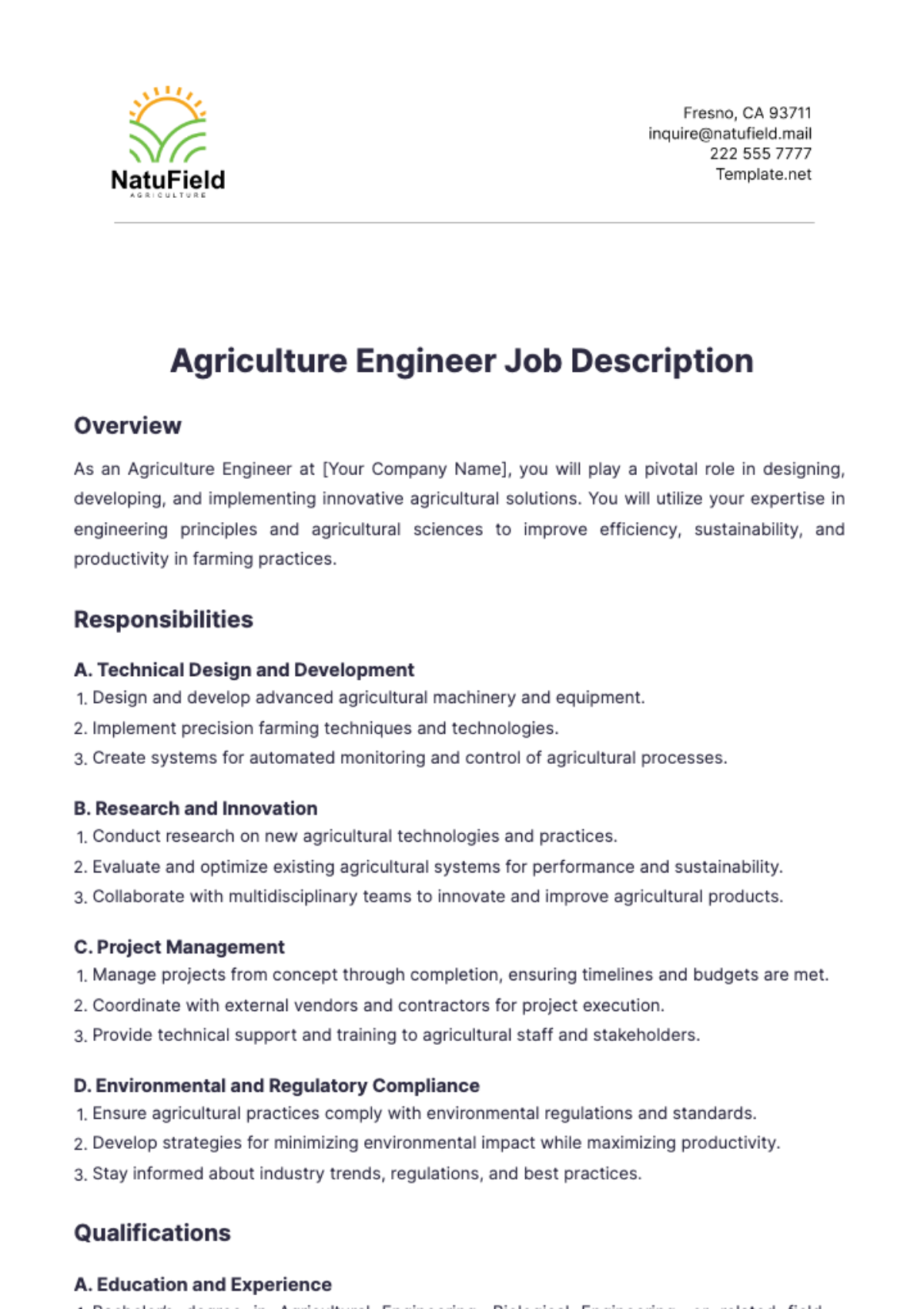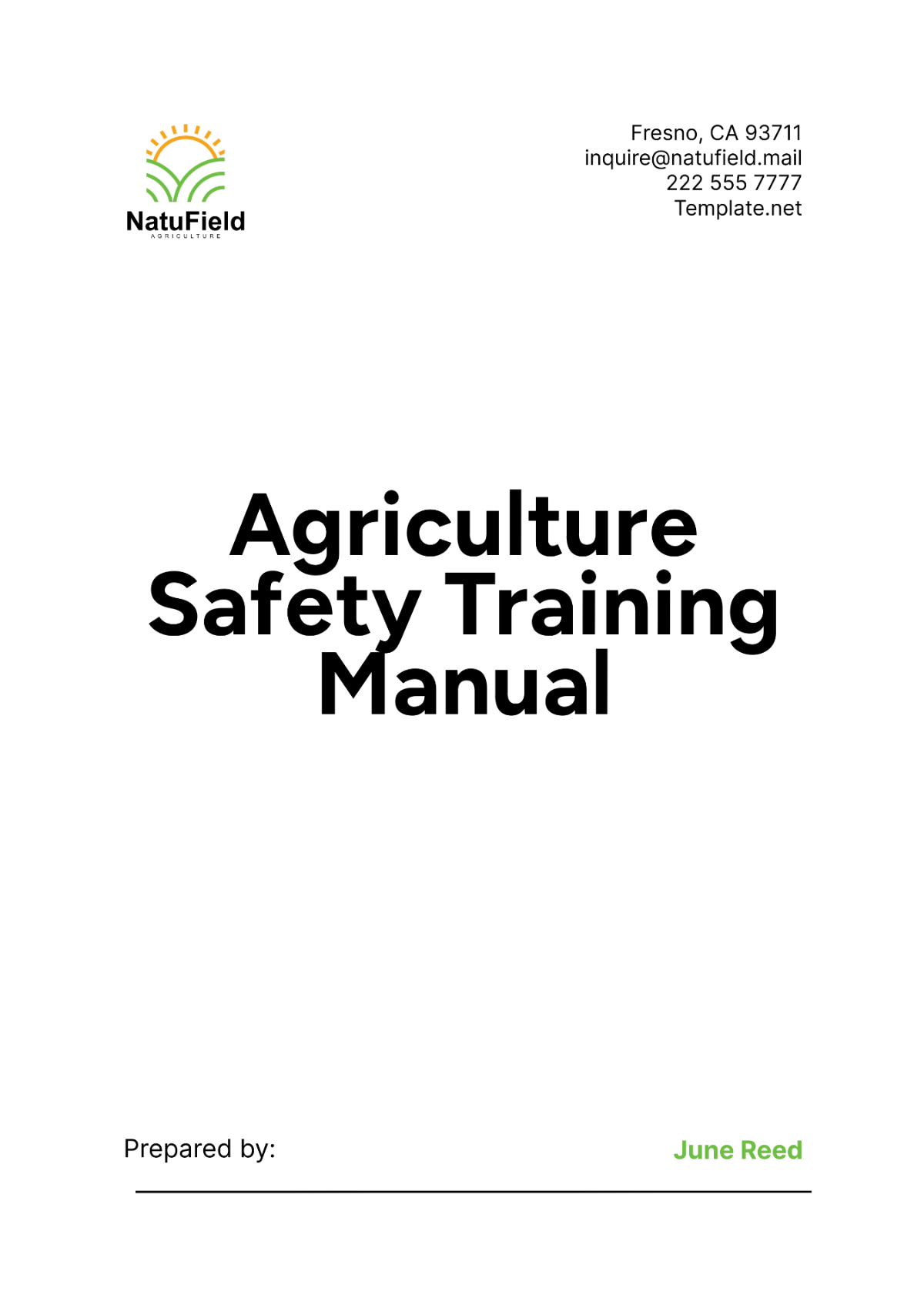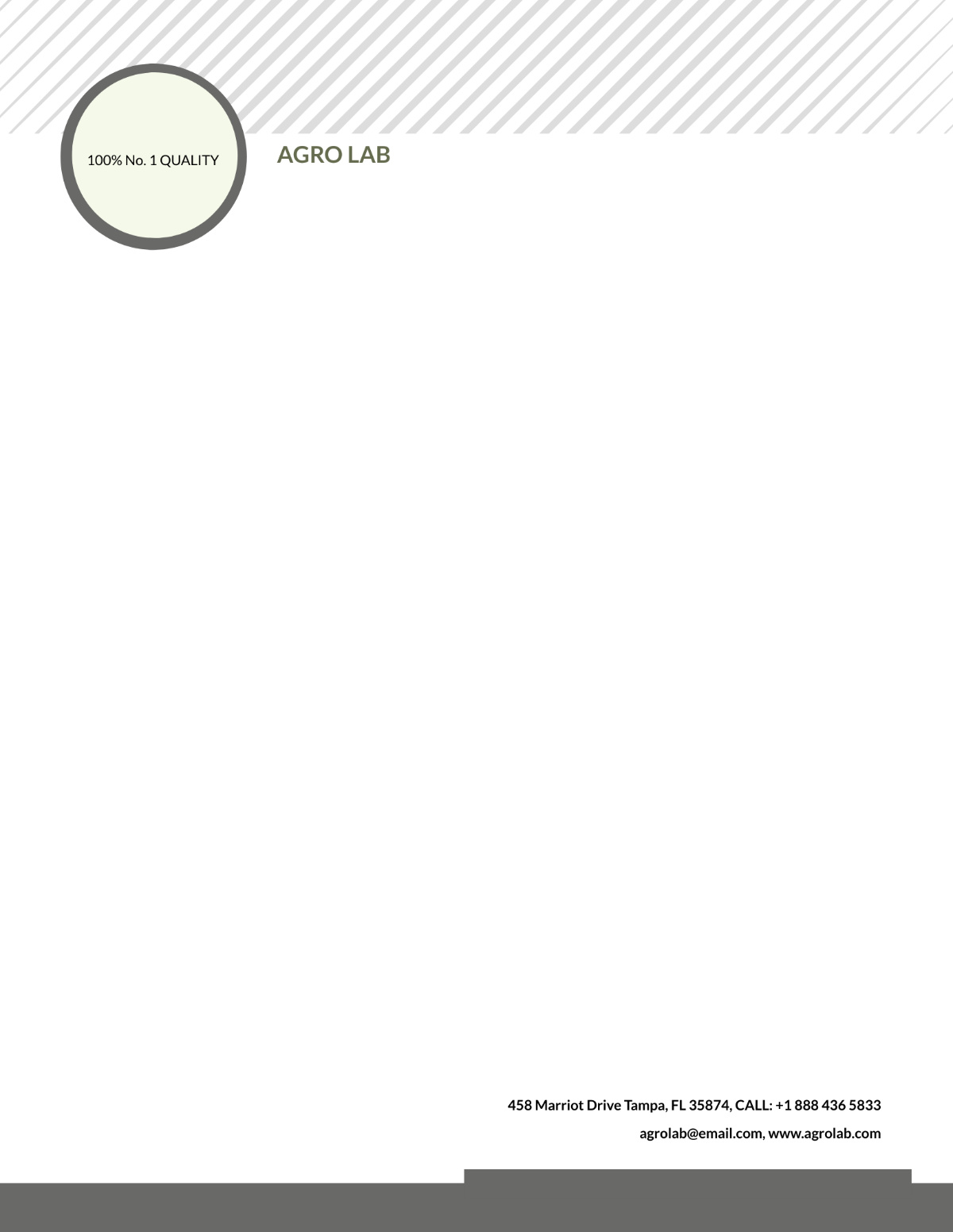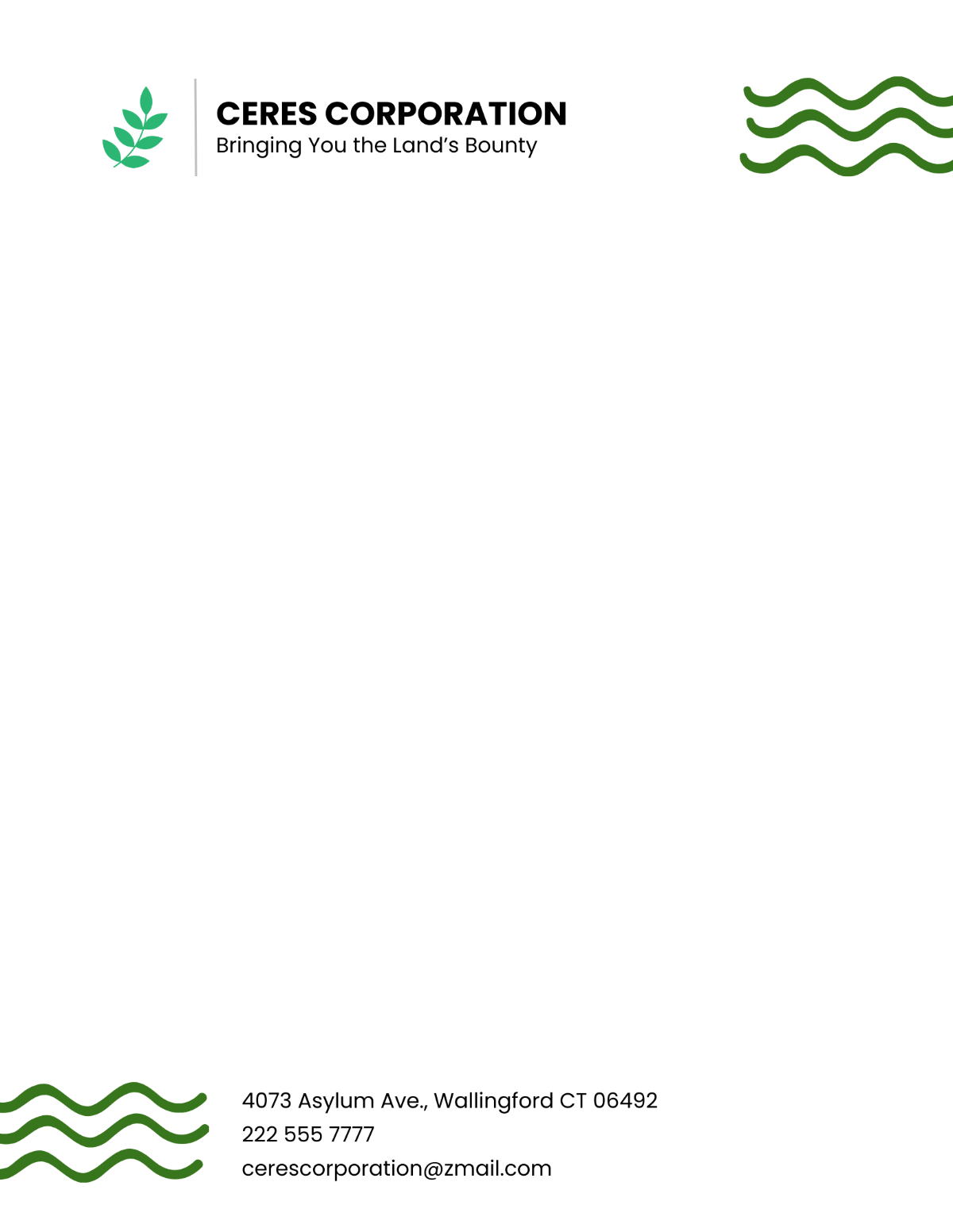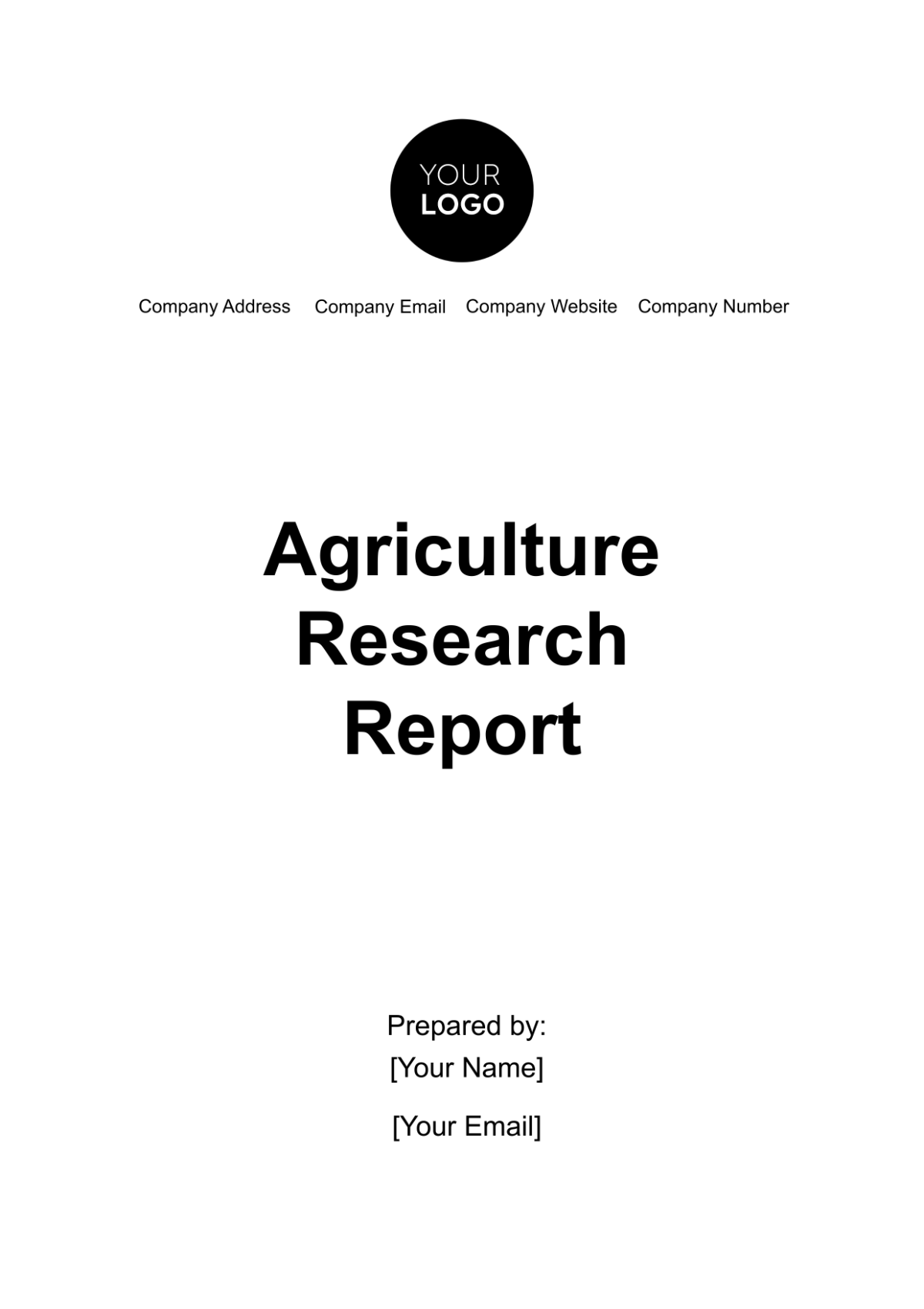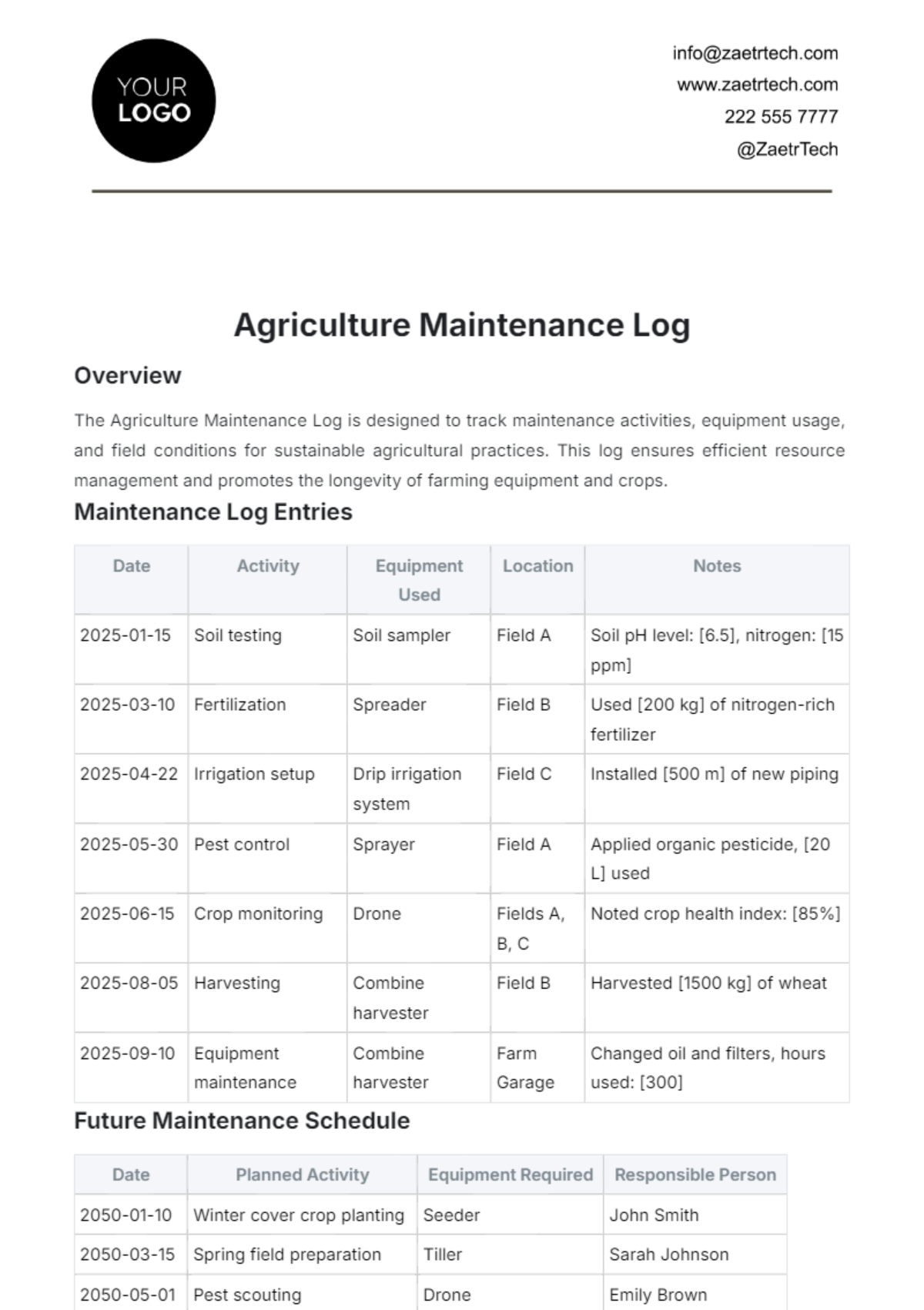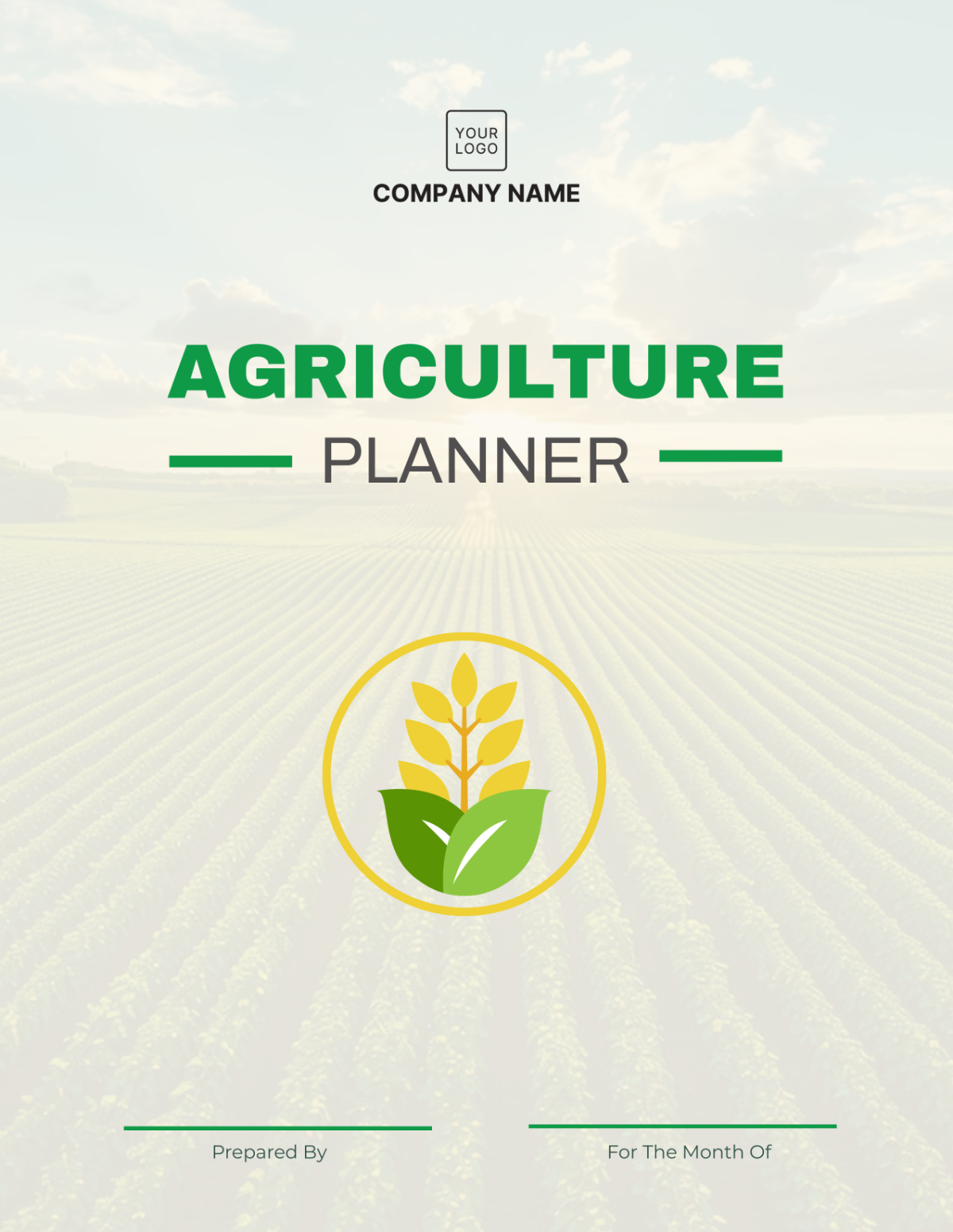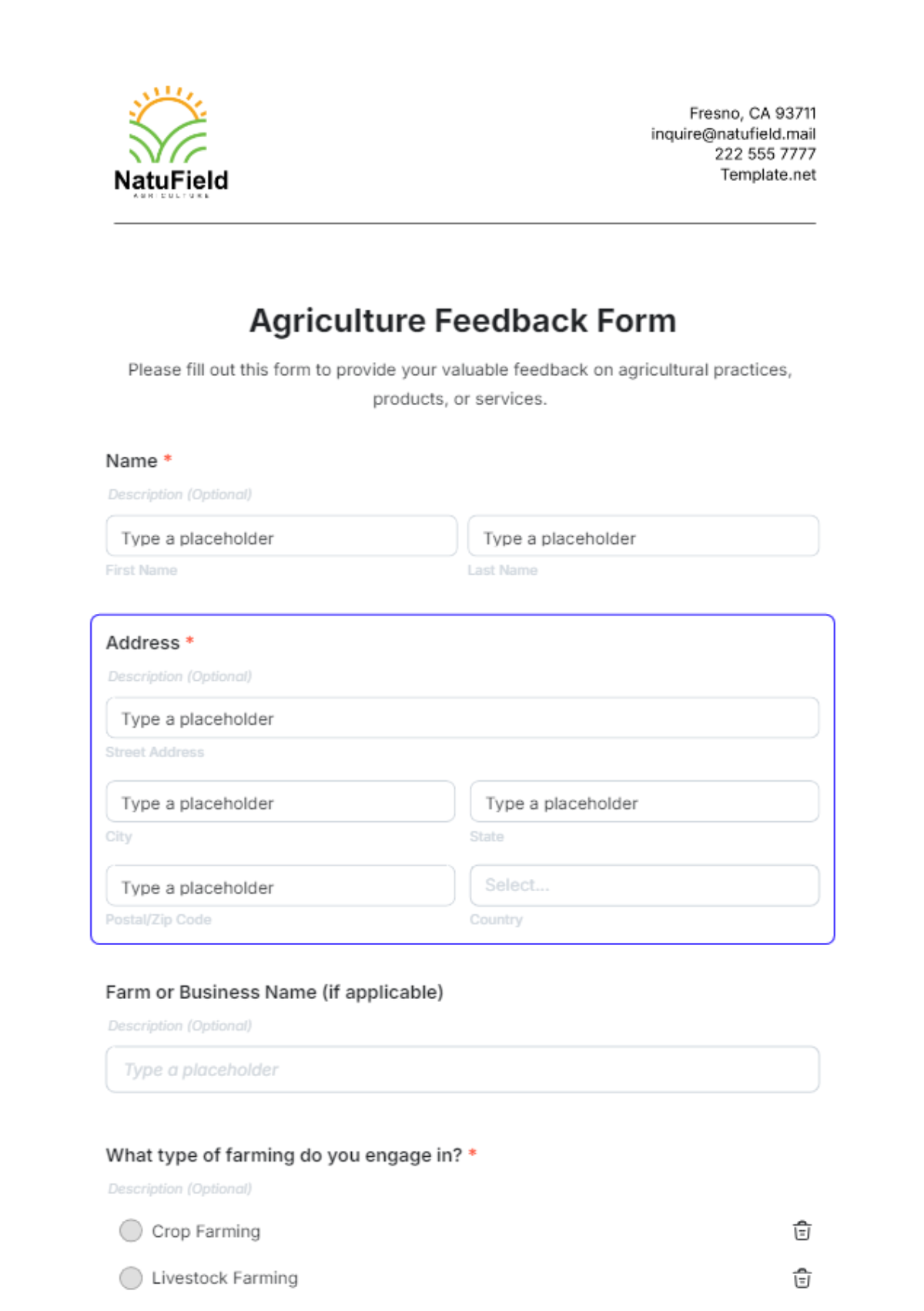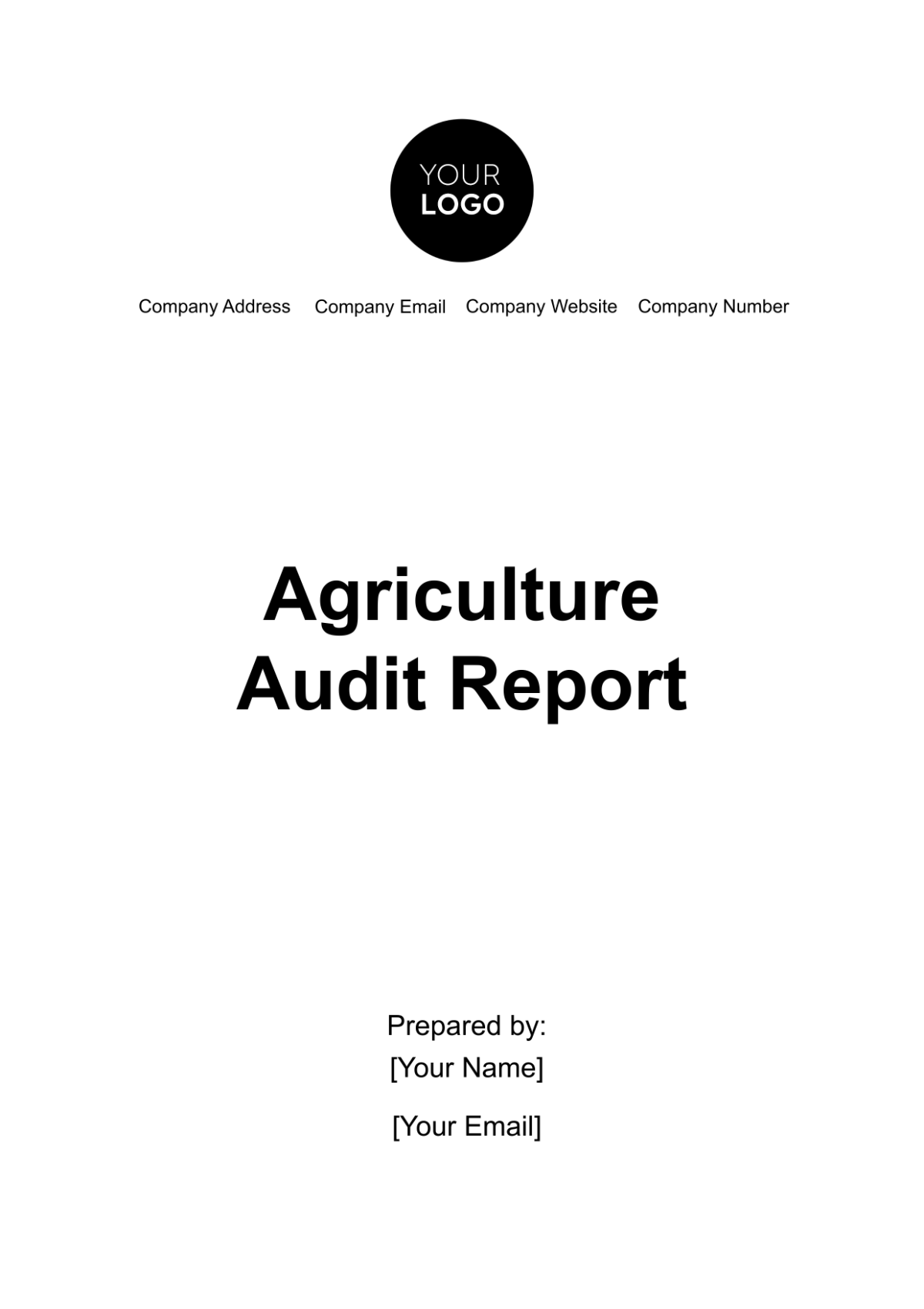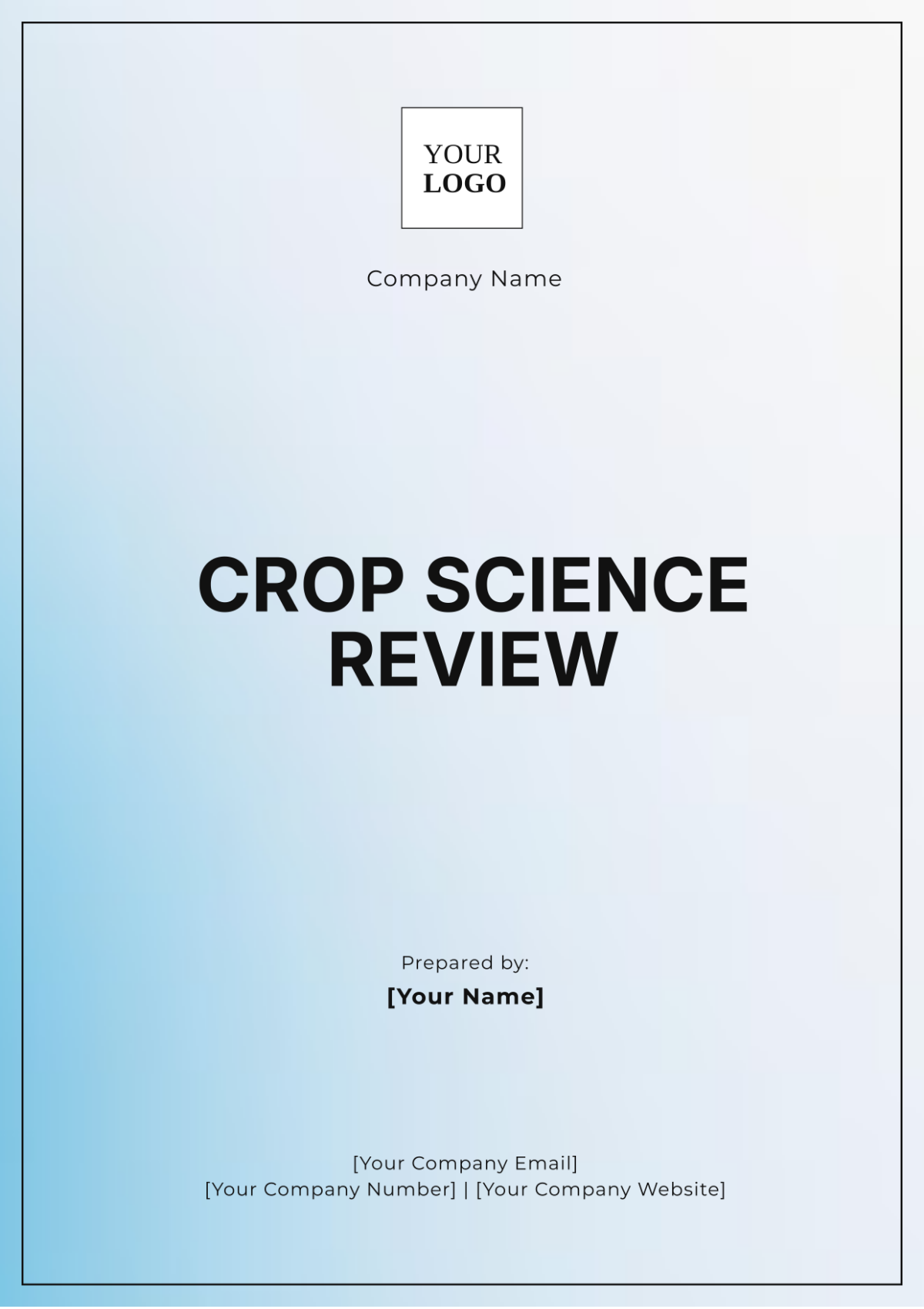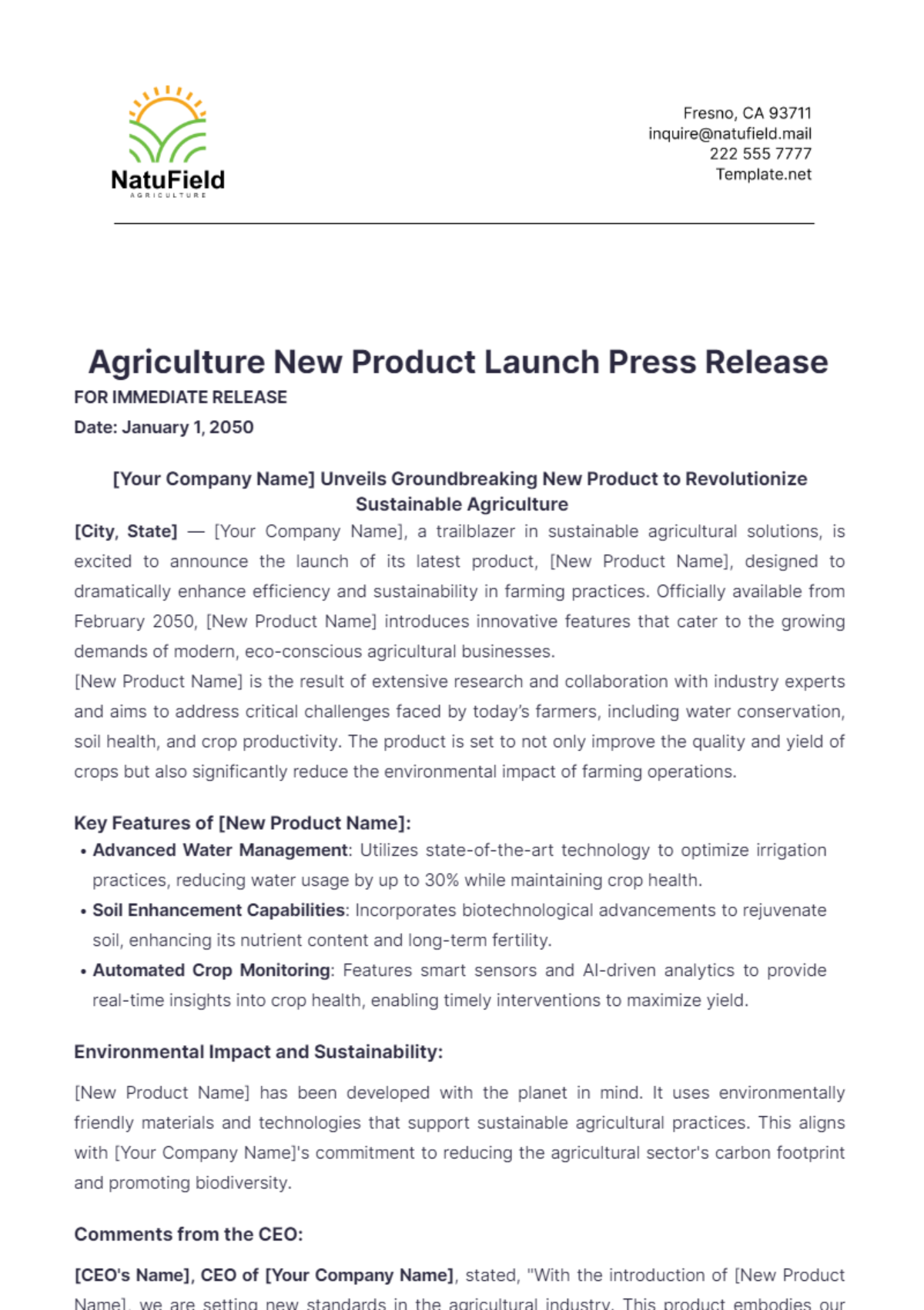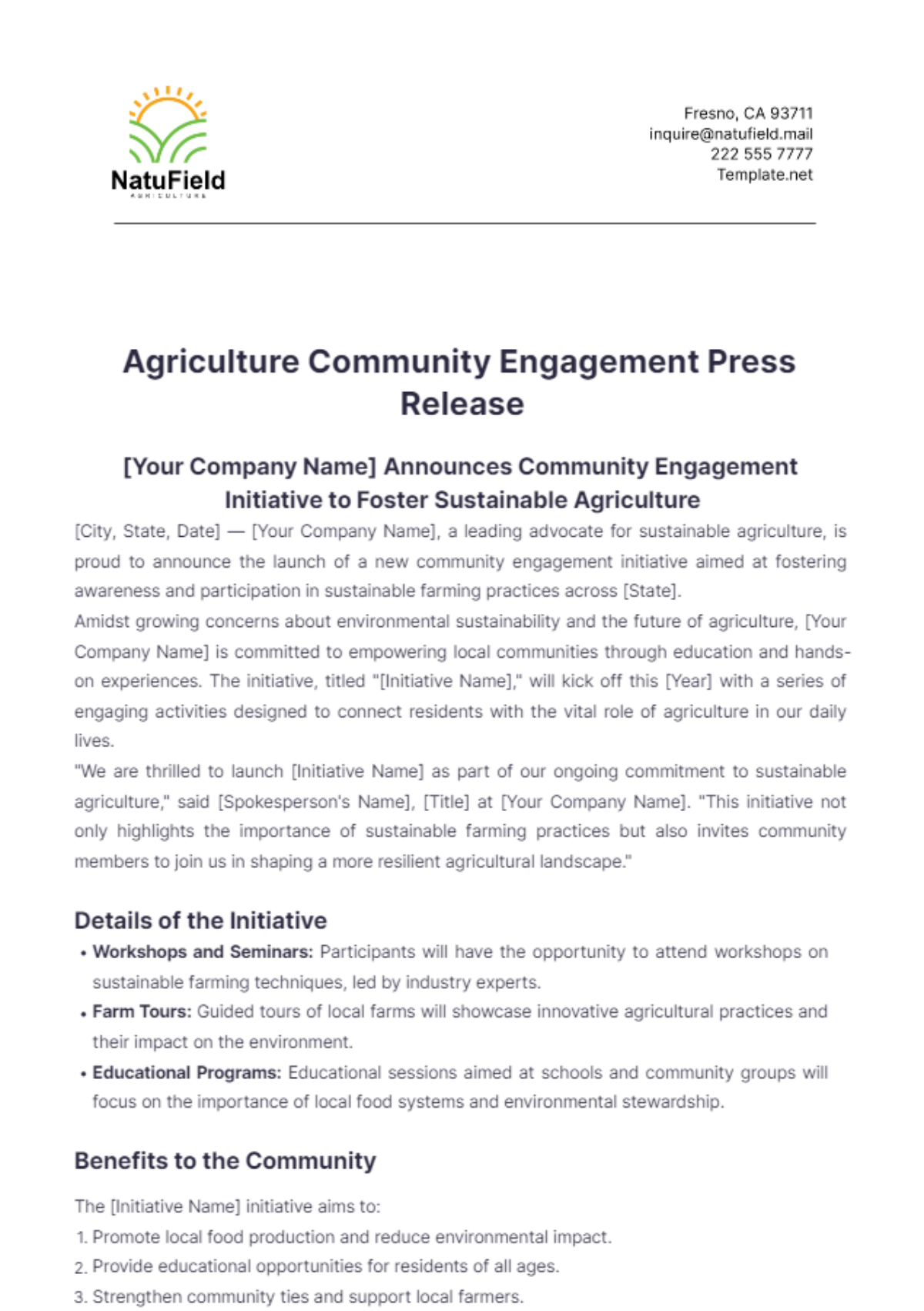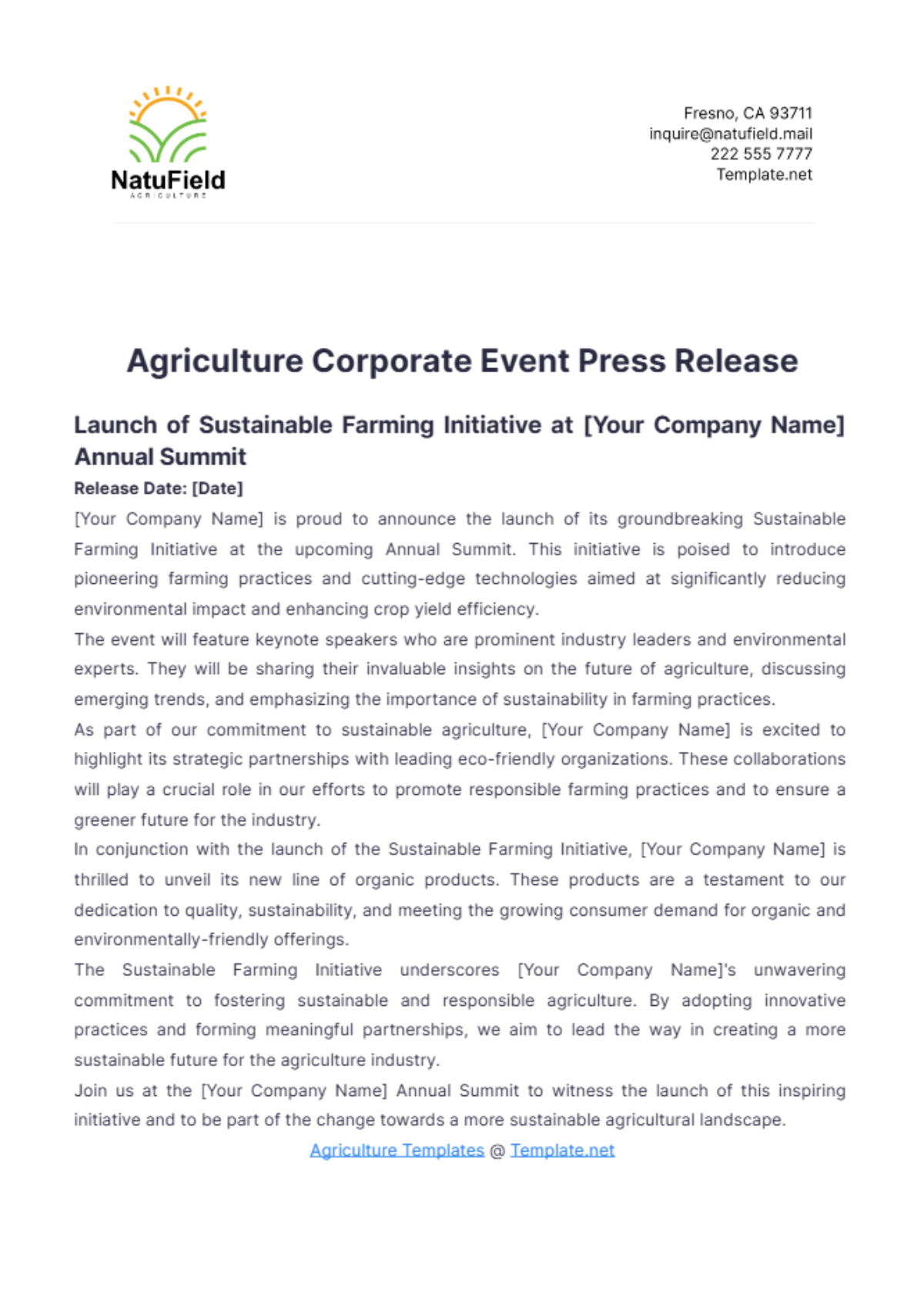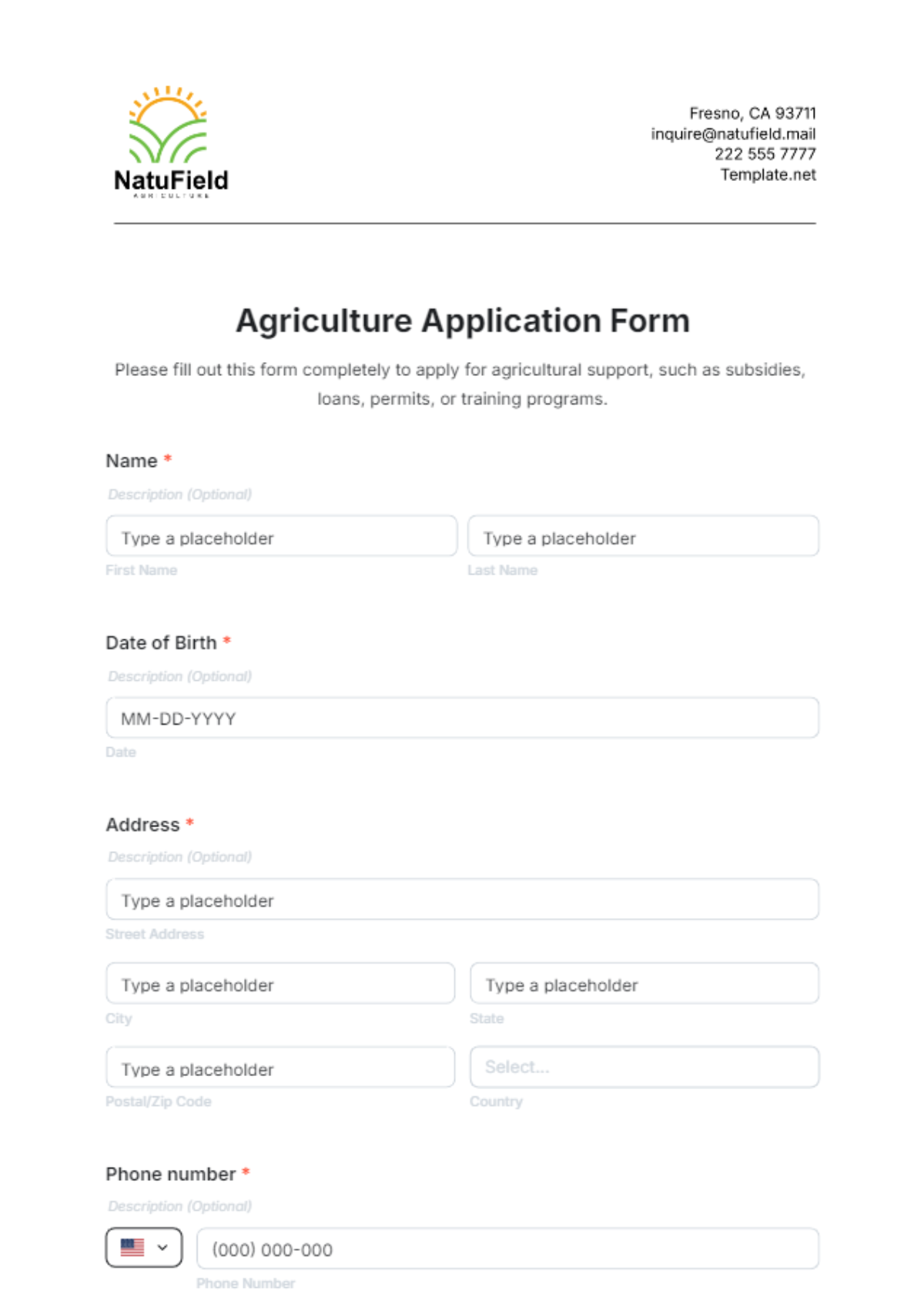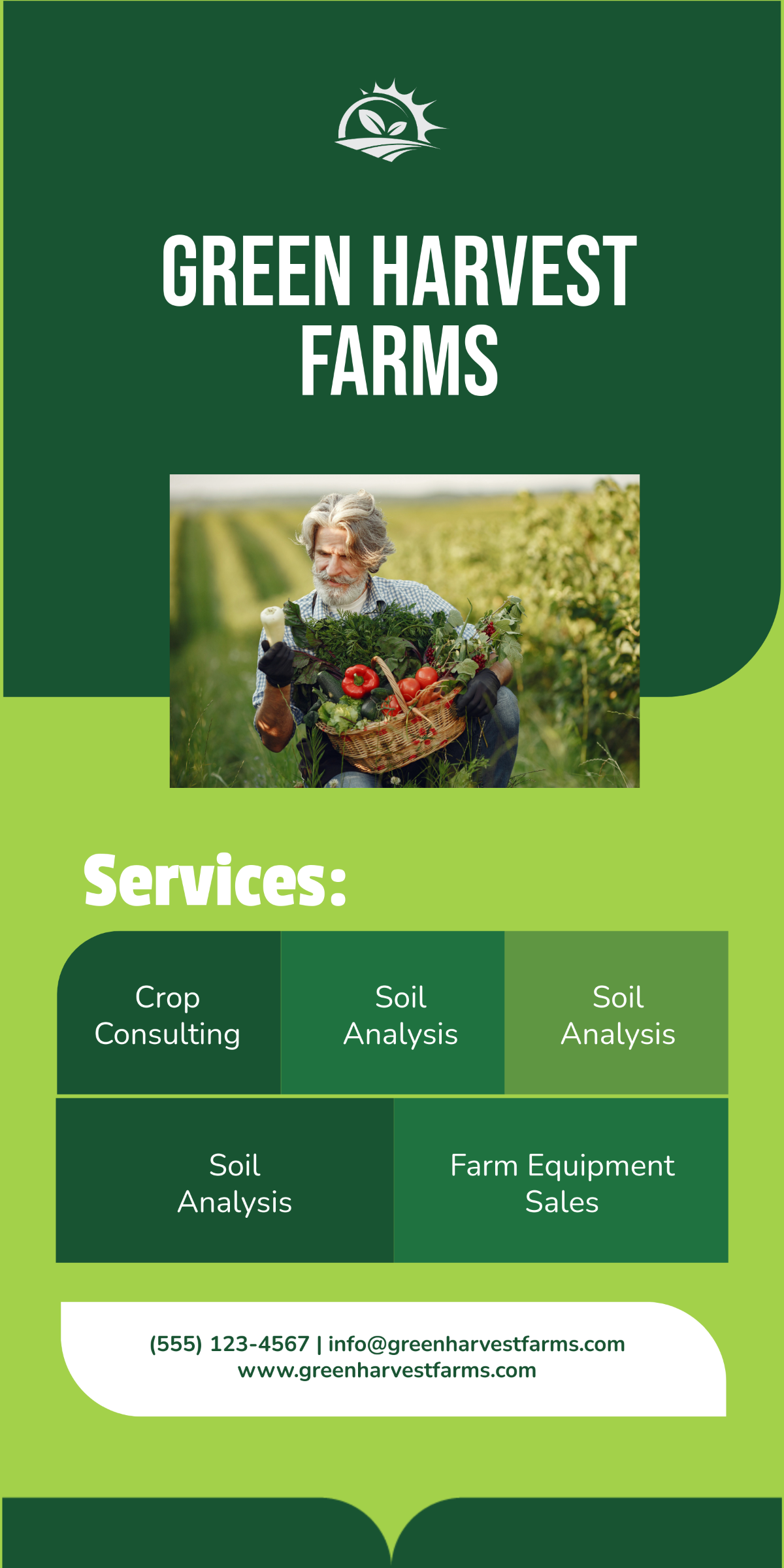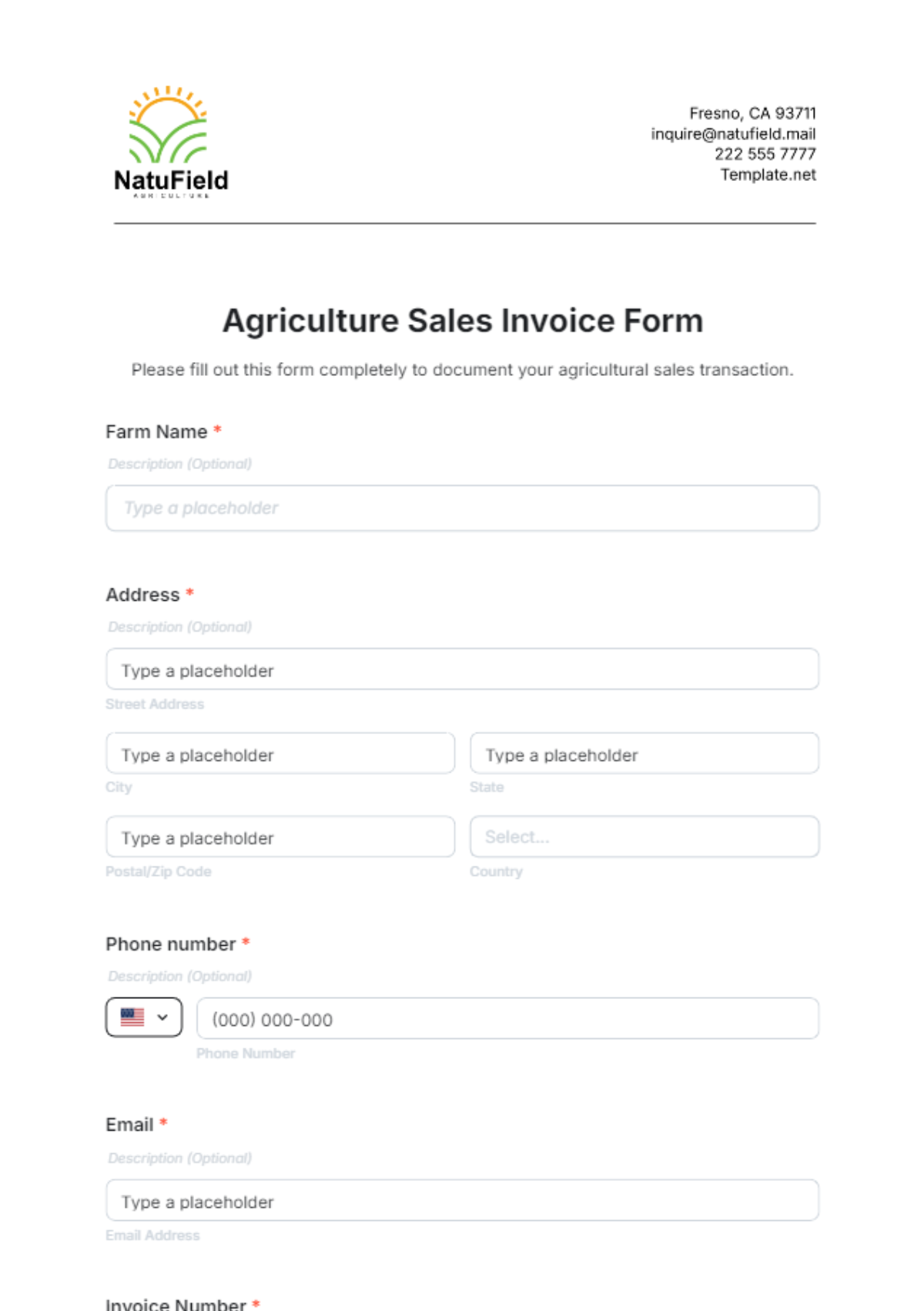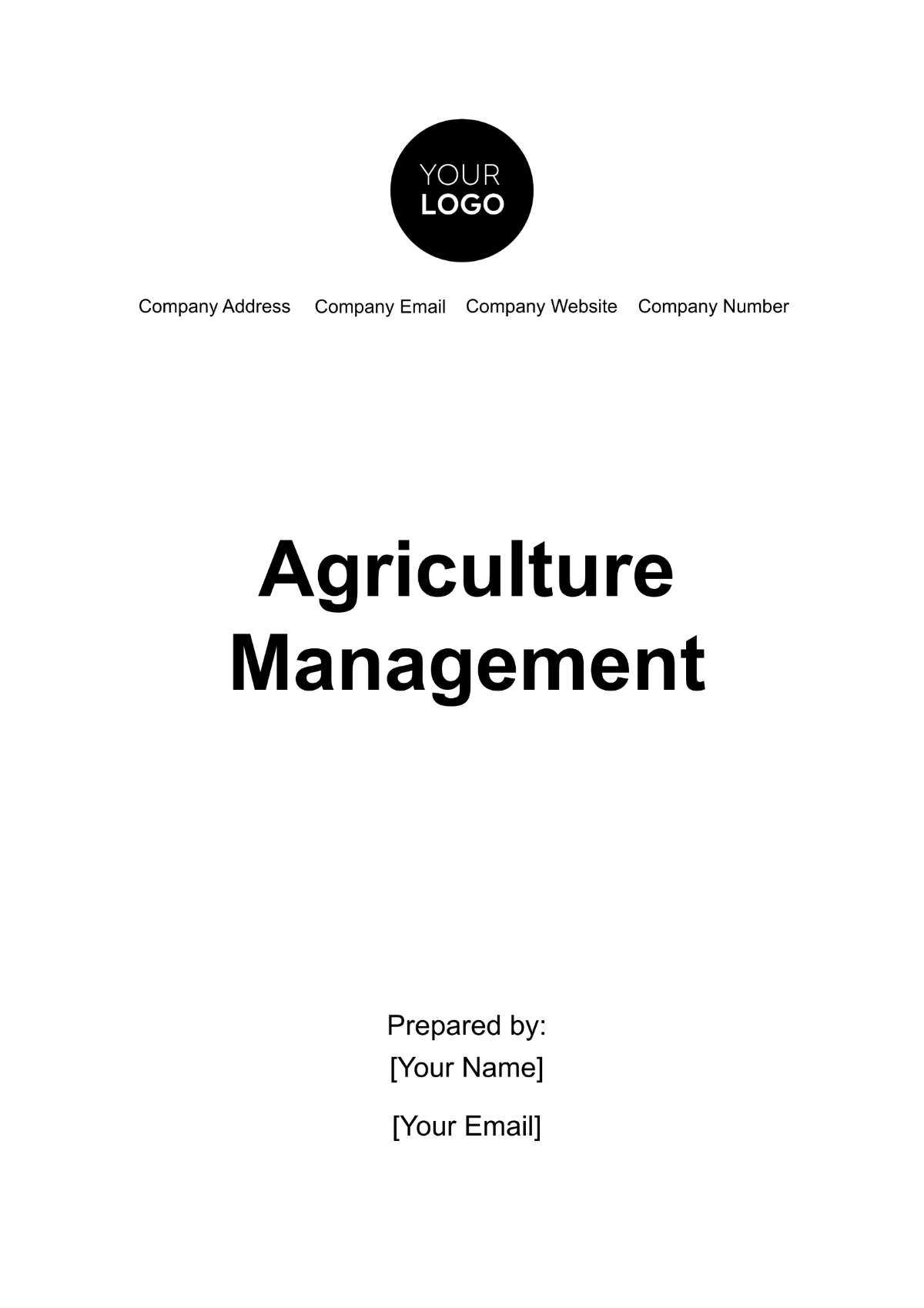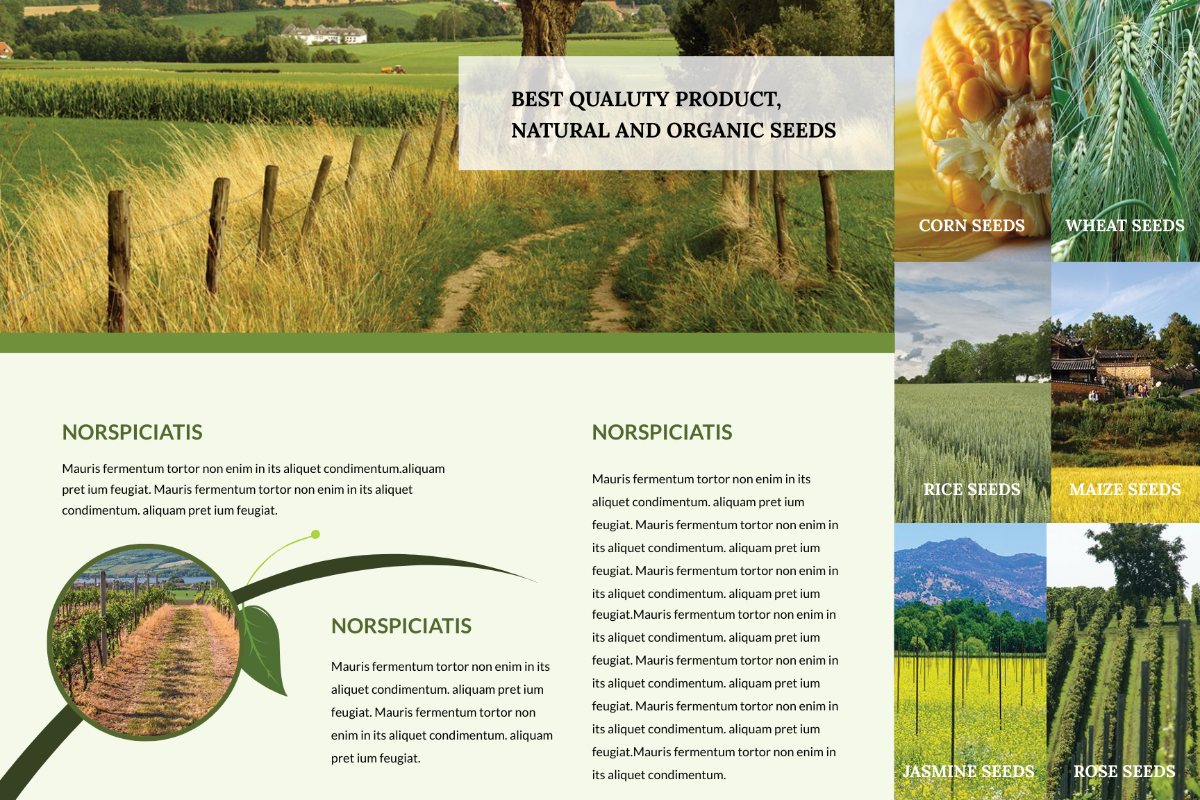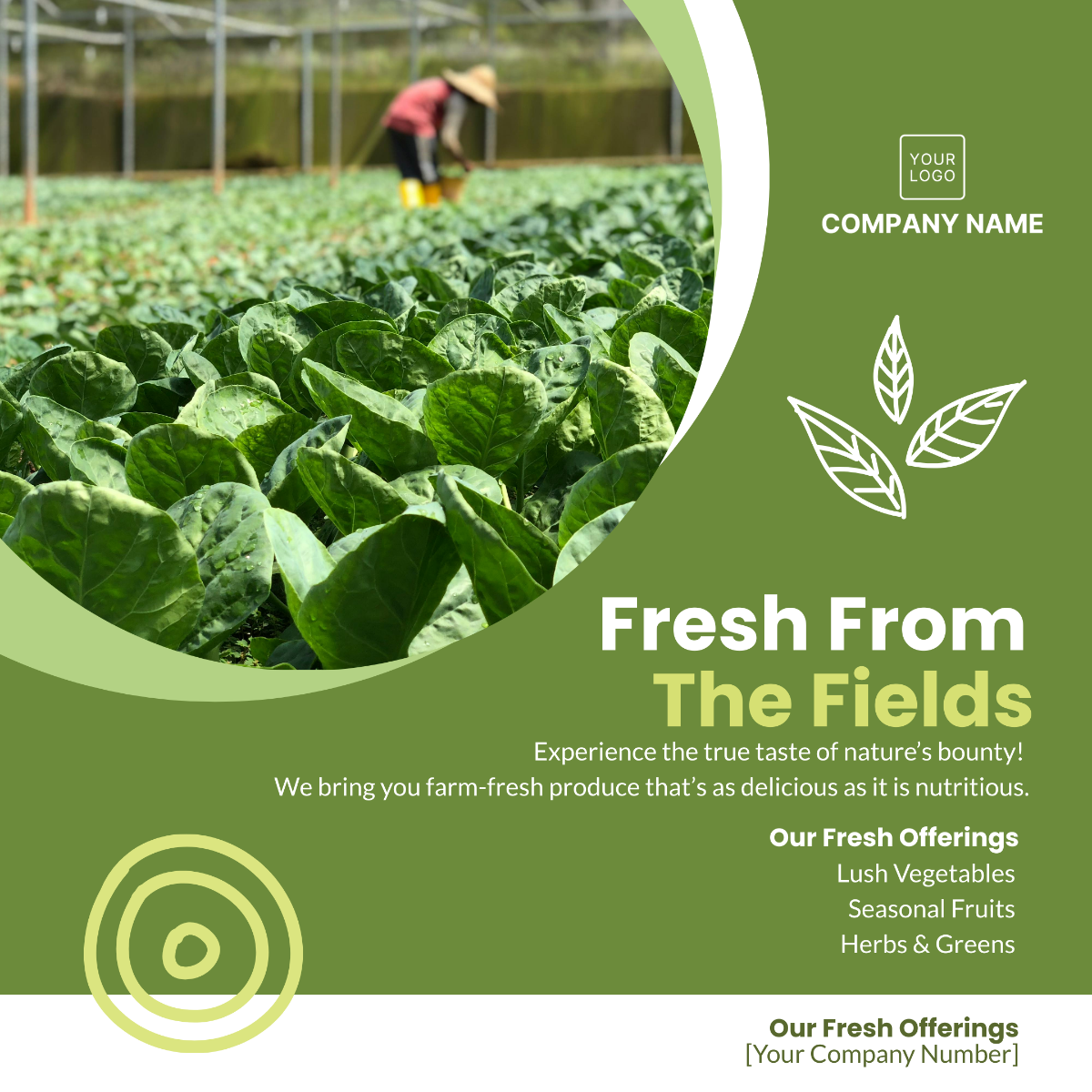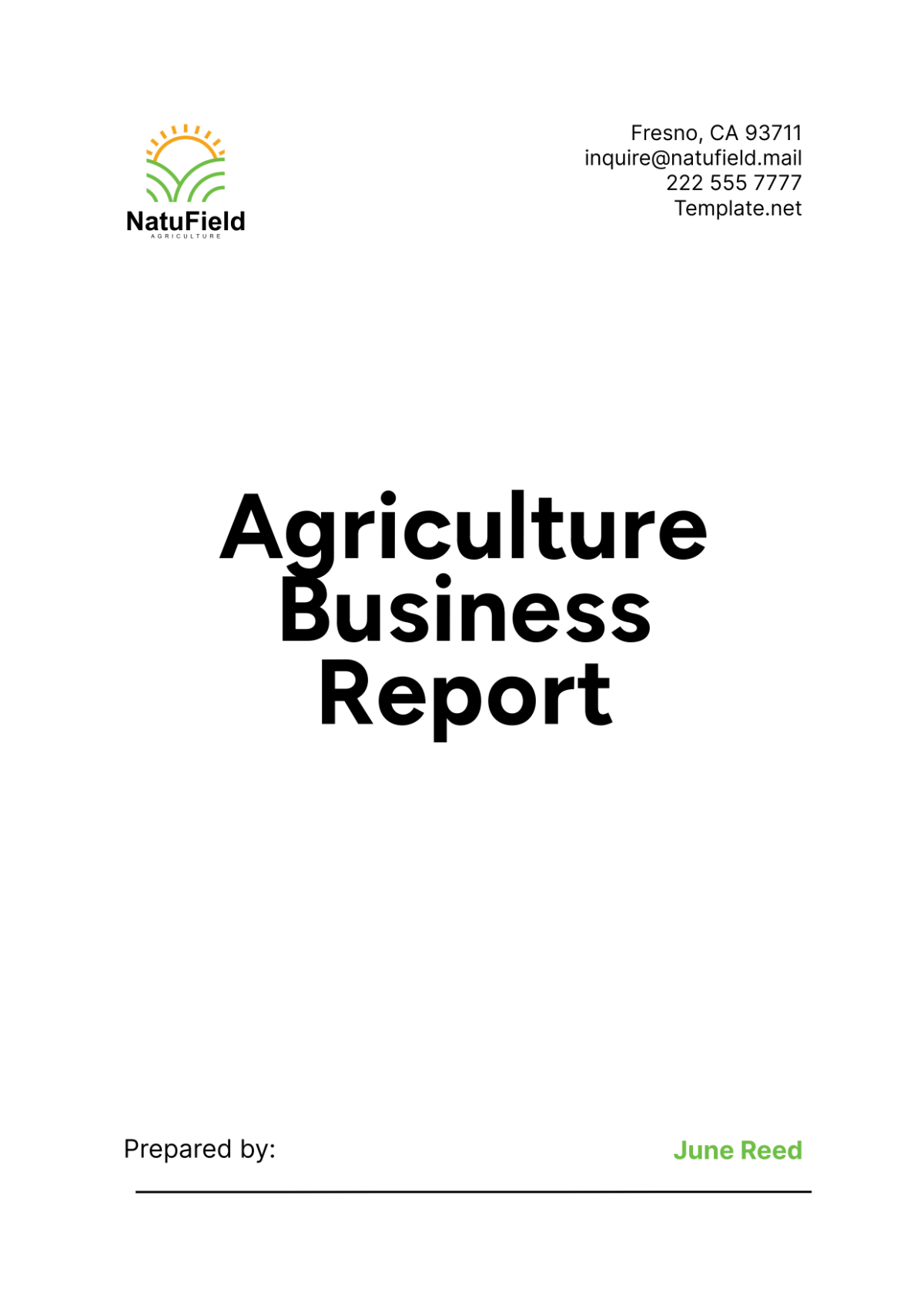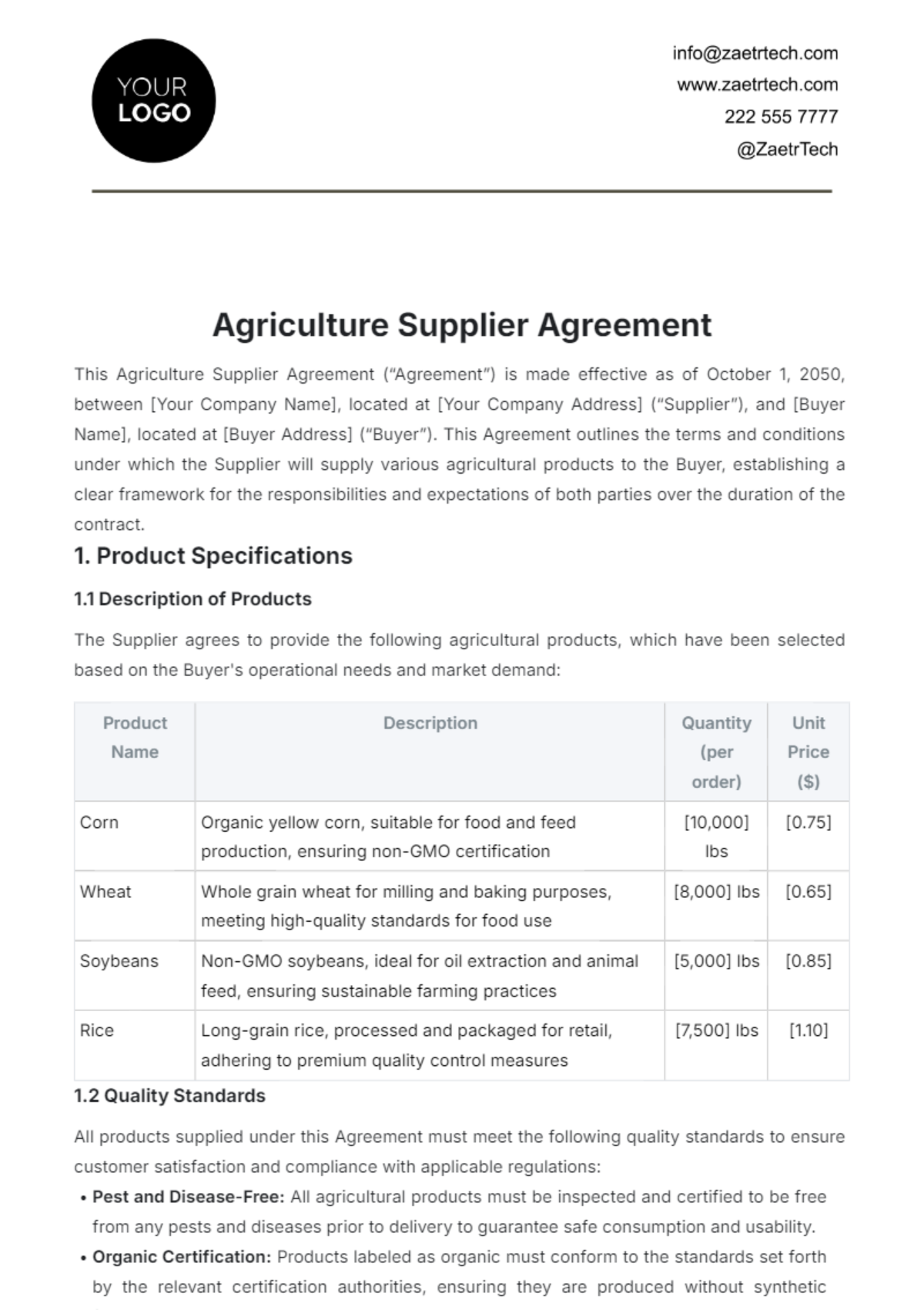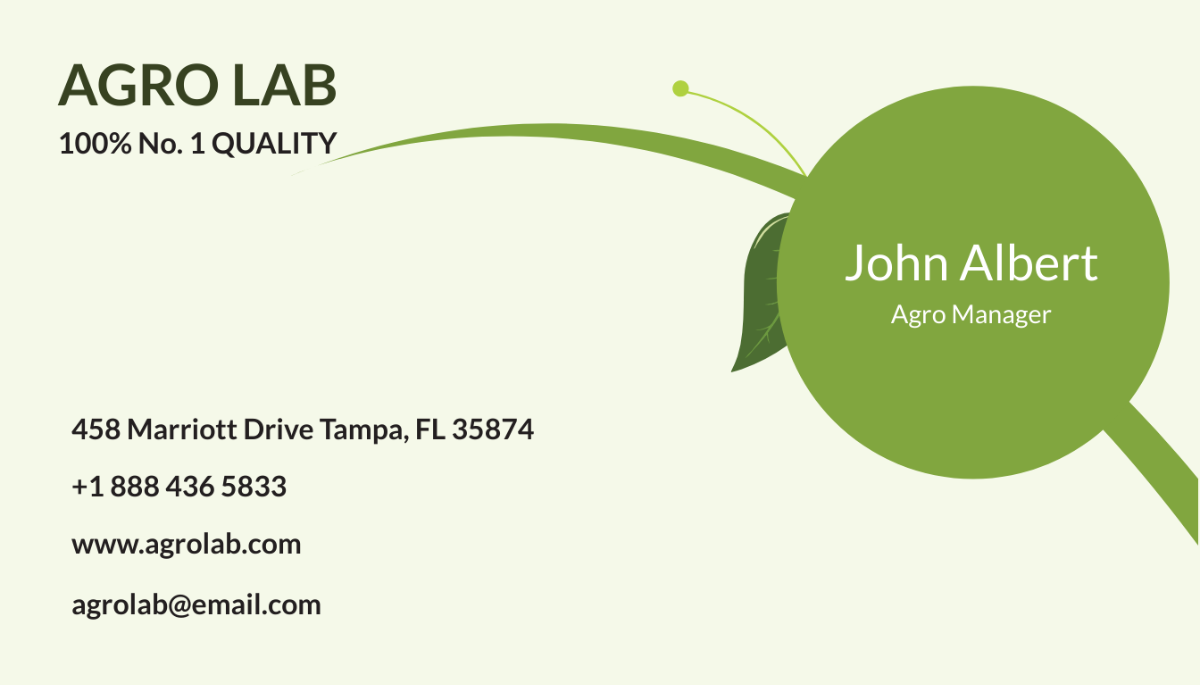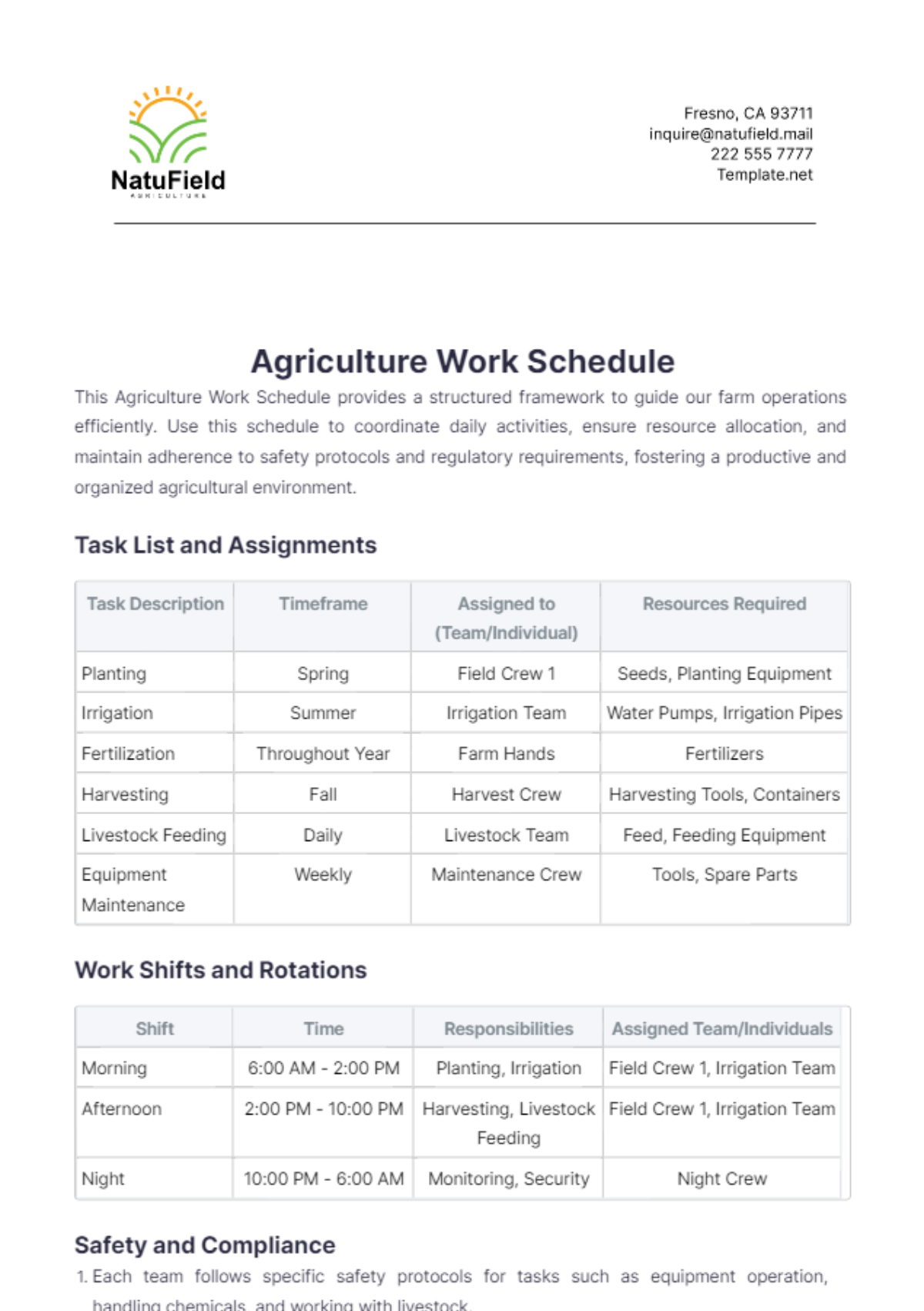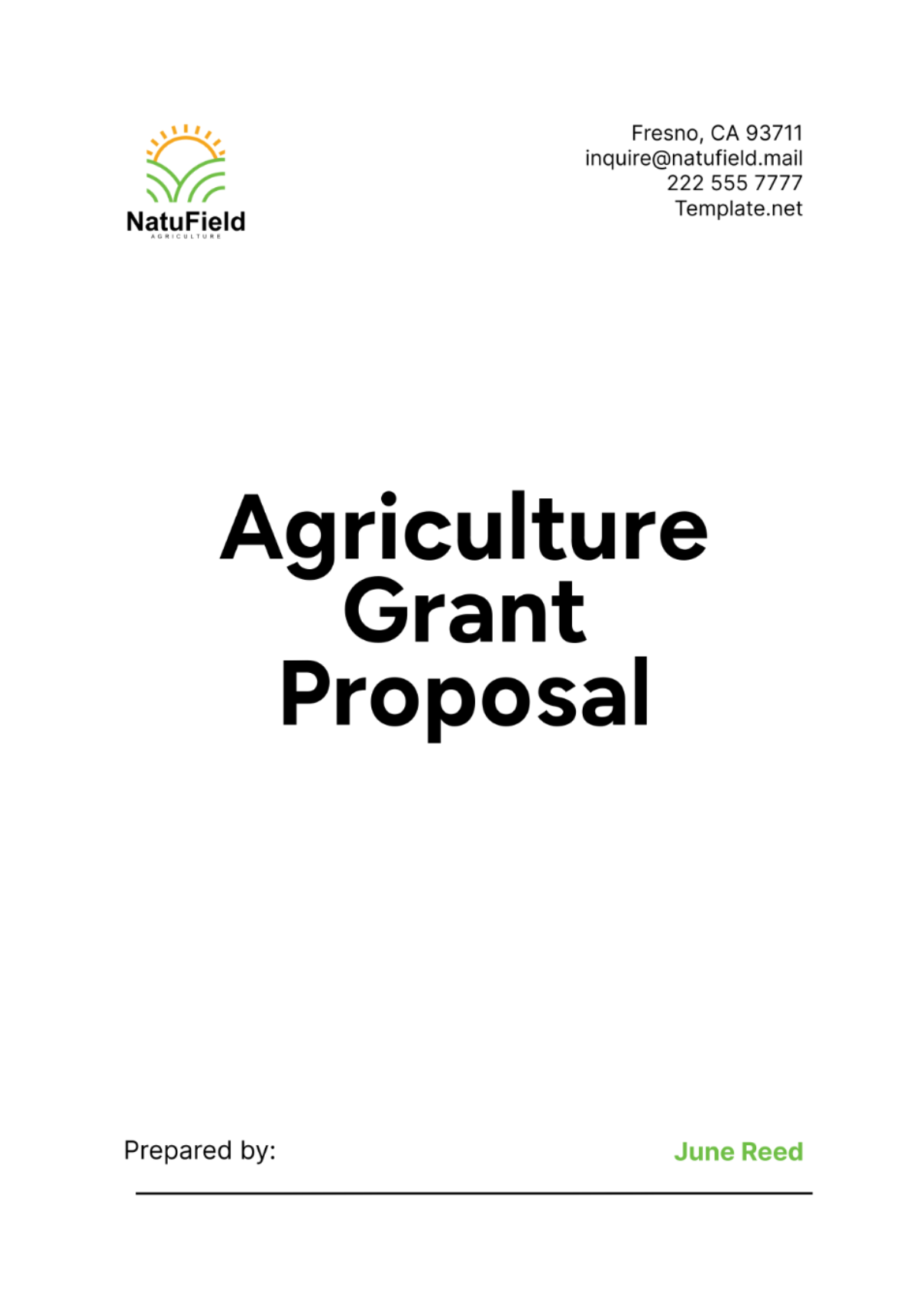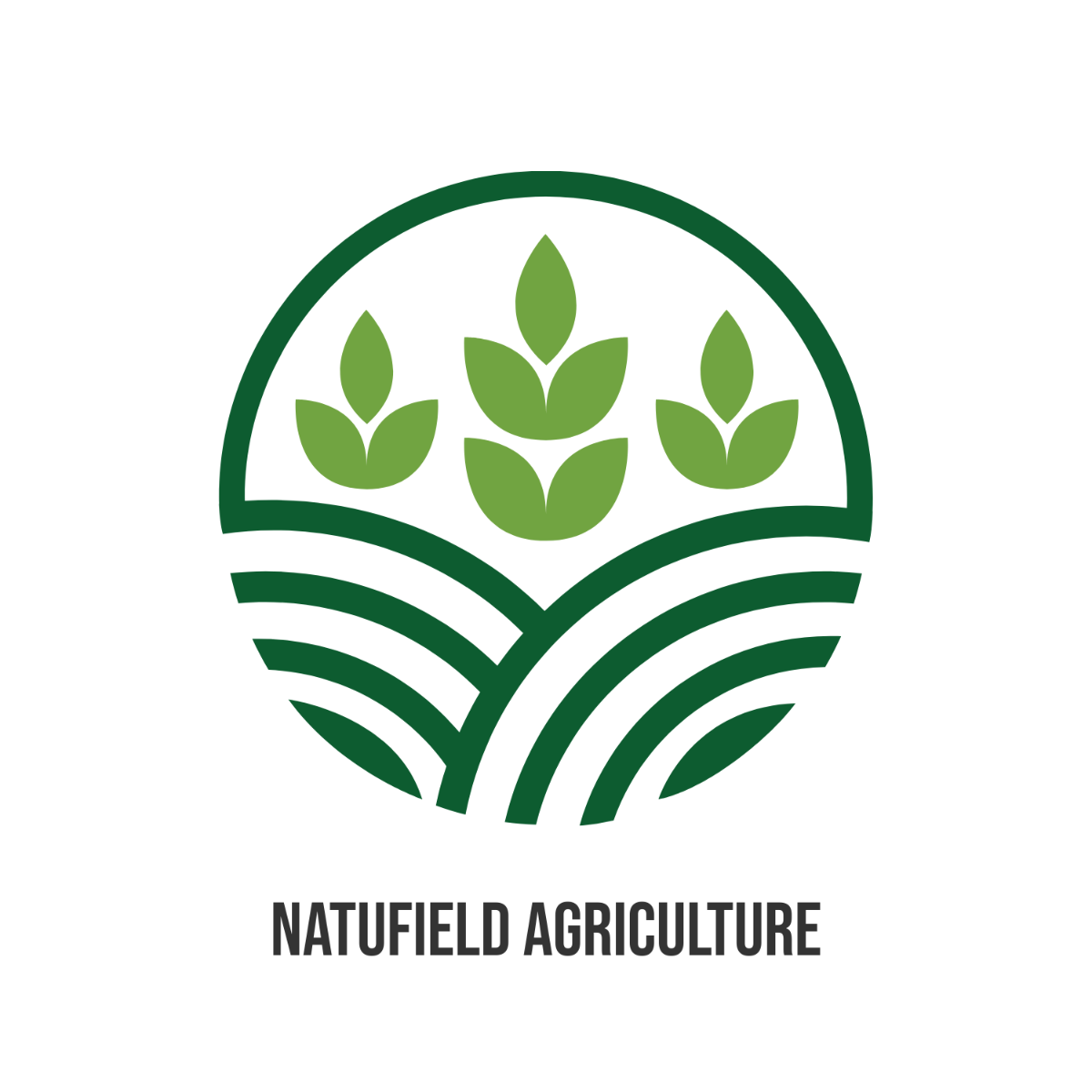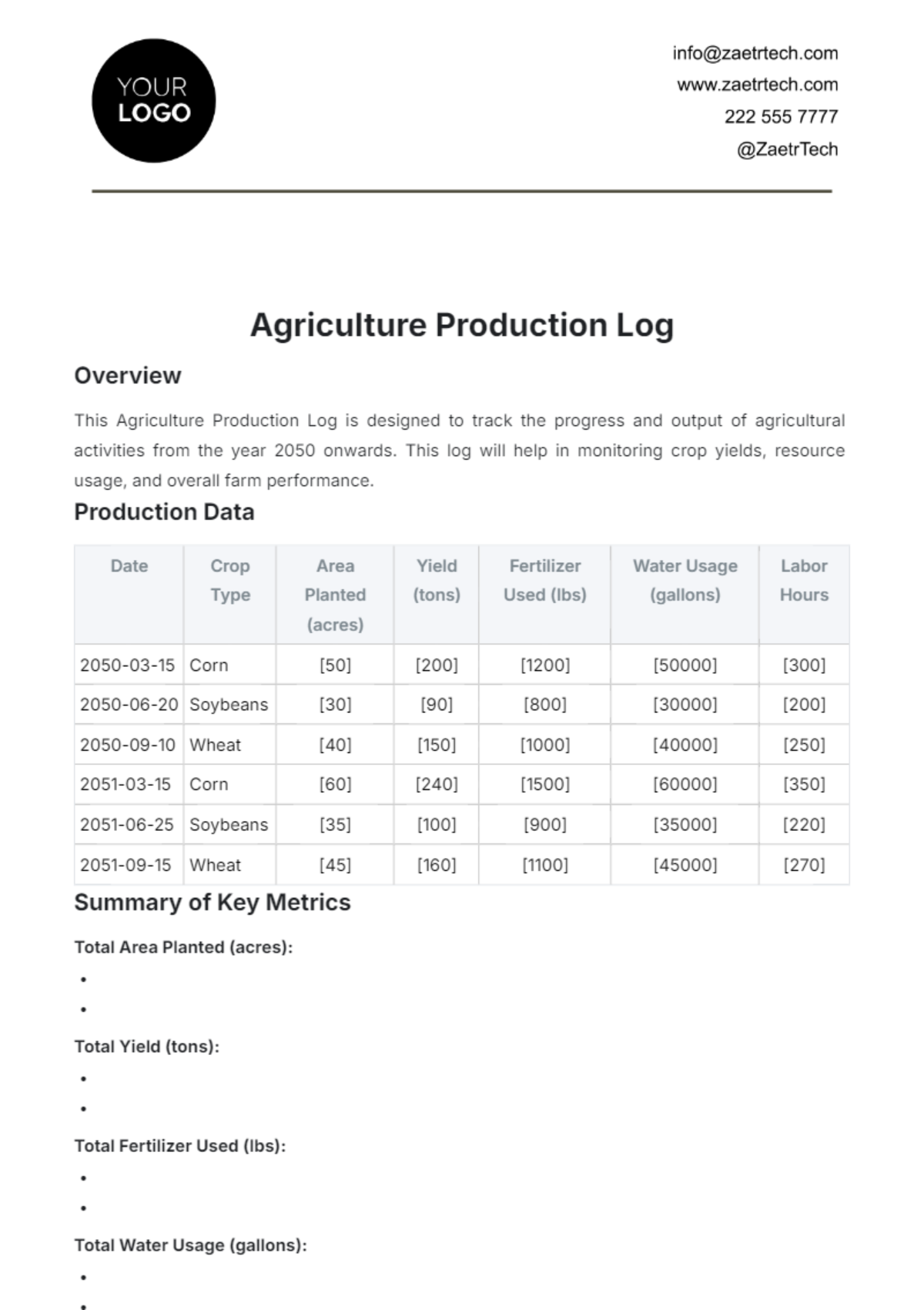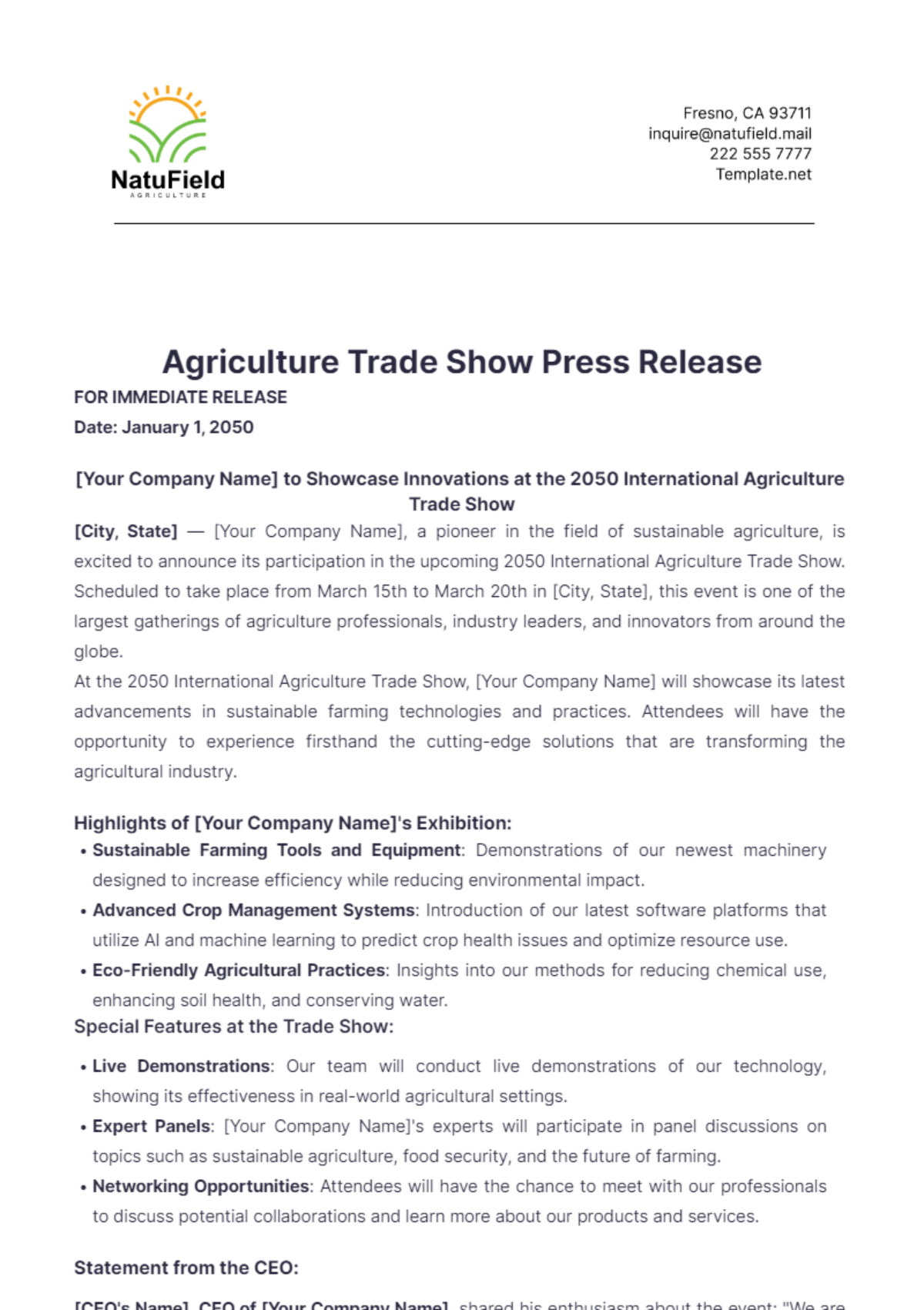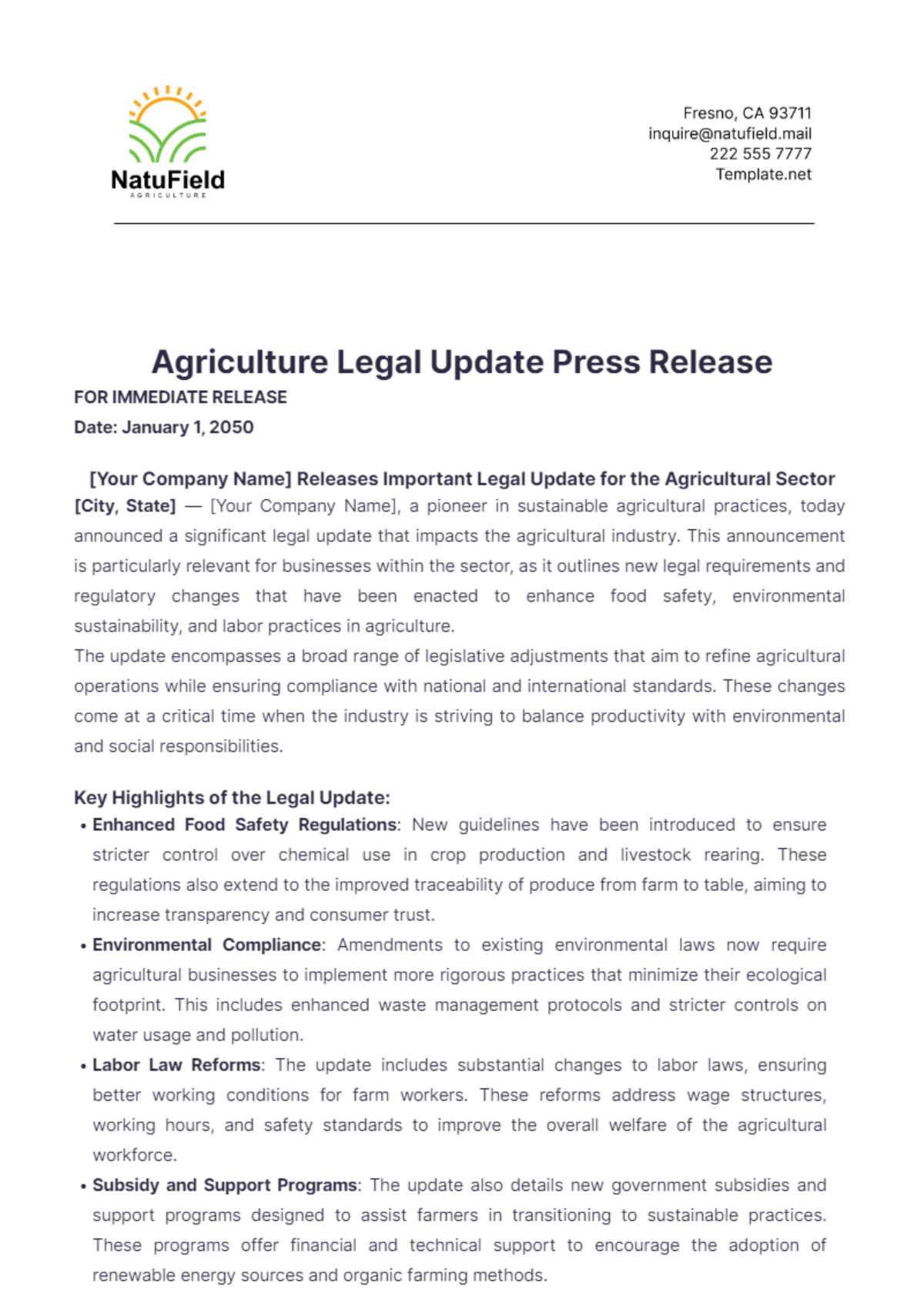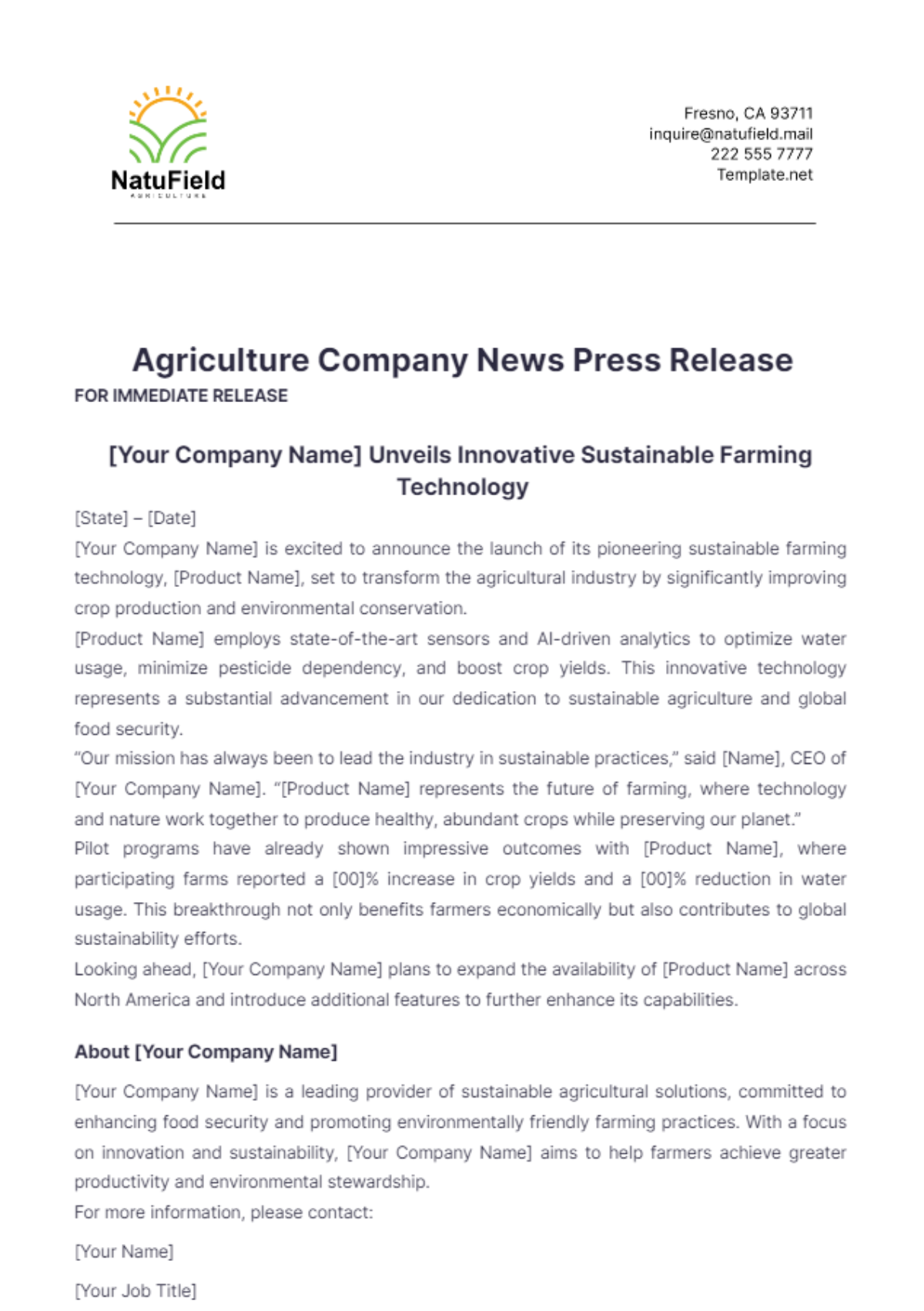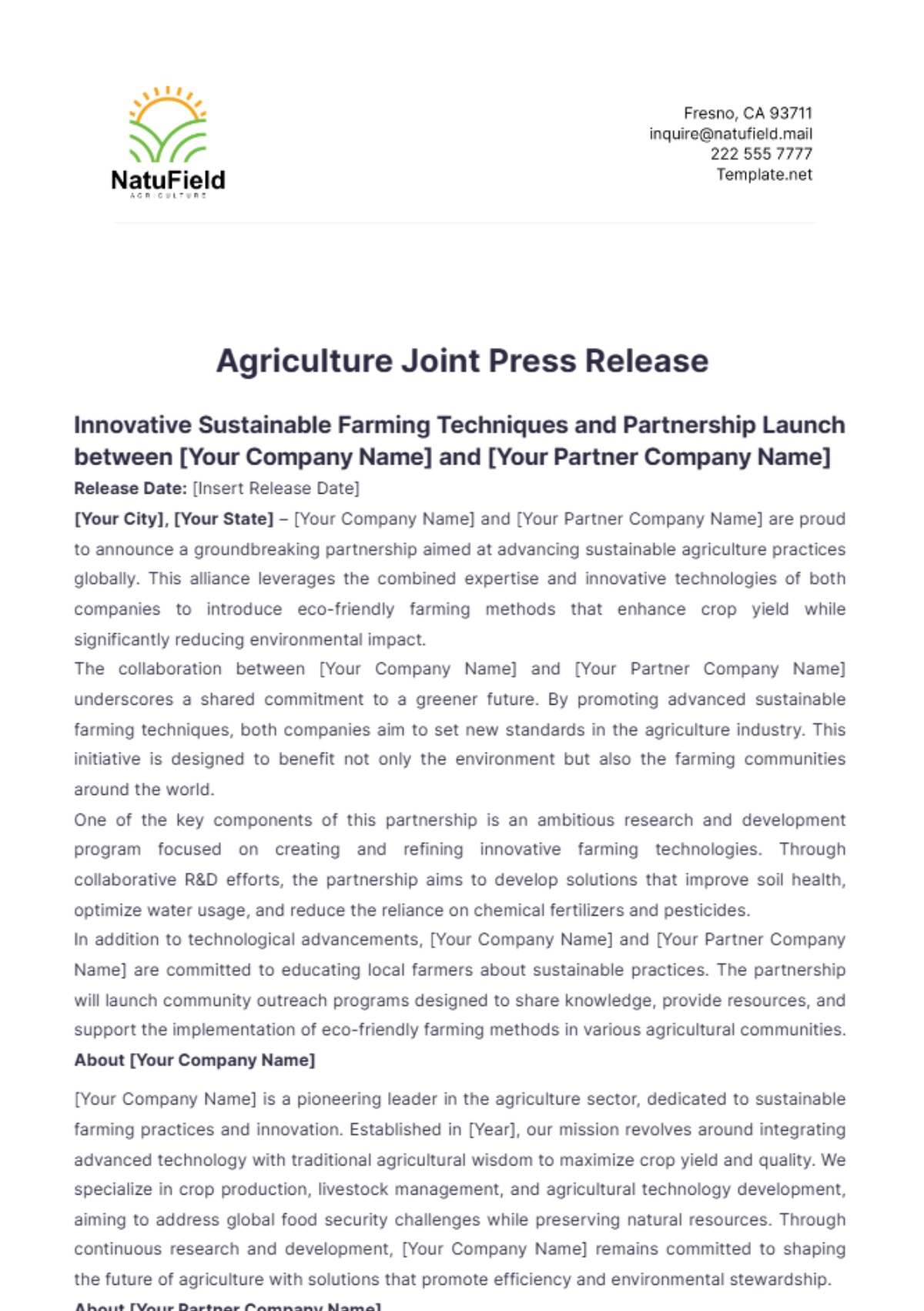Agriculture Supply Chain Guide
1. Introduction
This section provides a comprehensive overview of the agriculture supply chain process, designed to optimize efficiency and ensure the highest standards of quality.
1.1 Objectives
Enhance Efficiency in the Supply Chain: This objective focuses on streamlining all processes within the supply chain to eliminate bottlenecks and optimize workflow. By implementing advanced logistics planning, automating routine tasks, and adopting real-time tracking technologies, we aim to minimize delays and improve overall productivity. This ensures that every step, from procurement to distribution, operates at peak efficiency.
Reduce Operational Costs: Cost reduction is a critical objective, encompassing strategies to lower expenses across the supply chain. This involves negotiating better terms with suppliers, optimizing inventory levels to prevent overstocking or stockouts, and improving transportation routes to reduce fuel consumption. Additionally, adopting energy-efficient practices and leveraging economies of scale will contribute to significant cost savings, enhancing the profitability of our operations.
Ensure Quality and Timely Delivery of Products: Maintaining the highest quality standards and ensuring timely delivery are paramount to our supply chain operations. This objective includes implementing rigorous quality control measures at every stage, from raw material inspection to final product assessment. By setting stringent quality benchmarks and conducting regular audits, we guarantee that only superior products reach our clients. Furthermore, optimizing delivery schedules and employing reliable transportation partners ensure that products arrive on time, meeting or exceeding client expectations consistently.
1.2 Target Audience
Supply Chain Managers: This guide is essential for supply chain managers who are responsible for overseeing and coordinating the entire supply chain process. Their role involves strategic planning, resource allocation, and performance monitoring to ensure efficient operations. This guide provides them with the tools and methodologies needed to enhance supply chain efficiency, manage risks, and drive continuous improvement.
Procurement Officers: Procurement officers will find this guide invaluable in their role of sourcing and acquiring raw materials and equipment. Their responsibilities include supplier evaluation, contract negotiation, and cost management. The guide offers best practices for selecting reliable suppliers, achieving favorable procurement terms, and maintaining optimal inventory levels to support seamless production processes.
Logistics Coordinators: For logistics coordinators, this guide serves as a comprehensive resource for managing the movement of goods from suppliers to the end customers. Their duties involve route planning, transportation management, and ensuring timely deliveries. The guide provides detailed strategies for optimizing transportation logistics, reducing transit times, and minimizing transportation costs while ensuring the integrity and quality of the products during transit.
Quality Control Inspectors: Quality control inspectors play a crucial role in maintaining product standards and ensuring compliance with quality benchmarks. This guide equips them with the necessary protocols for conducting thorough inspections and audits at various stages of the supply chain. It emphasizes the importance of consistent quality checks, documentation, and corrective actions to uphold the highest quality standards and prevent any deviations that could impact product quality or customer satisfaction.
1.3 Scope
This guide comprehensively covers all stages of the supply chain, from procurement to distribution, ensuring a holistic approach to high-quality output. It details the critical steps in supplier selection, inventory management, logistics optimization, and quality control. By providing in-depth strategies and best practices for each phase, this guide ensures that every aspect of the supply chain operates seamlessly, enhancing efficiency and reliability across the board.
2. Sourcing Reliable Suppliers
This section outlines criteria and steps for selecting dependable suppliers crucial for ensuring a steady flow of high-quality raw materials. By establishing stringent selection processes, [Your Company Name] strengthens its supply chain resilience and enhances product consistency and customer satisfaction.
2.1 Criteria for Supplier Selection
Criteria | Description | Key Considerations | Evaluation Metrics | Examples |
|---|---|---|---|---|
Supplier's Reputation and Reliability | Evaluate the supplier's market standing, reliability, and past performance. Consider their history of meeting deadlines and maintaining consistent quality. | Industry reputation | Supplier ratings | A supplier with a high industry rating and positive client reviews over the last 5 years. |
Customer feedback | Customer reviews | A supplier with testimonials from long-term partners. | ||
Historical performance | Number of years in business | A supplier that has consistently met delivery deadlines for the past decade. | ||
Quality of Raw Materials | Assess the quality of raw materials provided by the supplier. Ensure they meet the required standards and specifications for your products. | Material specifications | Quality certification | A supplier providing grains that meet ISO 9001 standards. |
Consistency of quality | Test results | A supplier whose raw material quality scores above 95% in periodic testing. | ||
Testing and certification procedures | Sample evaluations | A supplier that conducts regular third-party quality inspections. | ||
Pricing and Payment Terms | Analyze the supplier's pricing structure and payment terms. Look for competitive pricing without compromising on quality, and favorable payment conditions. | Cost competitiveness | Price comparison | A supplier offering a 10% discount on bulk orders over 10,000 units. |
Flexibility of payment terms | Payment schedule | A supplier that provides 60-day payment terms. | ||
Discounts for bulk purchases | Total cost of ownership | A supplier with lower total cost of ownership due to reduced shipping fees. | ||
Delivery Capabilities | Ensure the supplier has robust logistics and delivery systems in place. They should be able to deliver materials on time and handle large order volumes. | Delivery lead times | On-time delivery rate | A supplier that delivers within 24 hours for urgent orders. |
Shipping methods | Order fulfillment rate | A supplier using advanced tracking for shipments. | ||
Capacity to handle urgent orders | Logistics infrastructure | A supplier with a fleet capable of handling large-scale logistics. | ||
Compliance with Regulations | Verify that the supplier complies with all relevant industry regulations and standards. Ensure they have necessary certifications and licenses. | Industry-specific regulations | Certification status | A supplier certified by USDA for organic produce. |
Environmental standards | Audit reports | A supplier adhering to ISO 14001 environmental standards. | ||
Health and safety compliance | Regulatory compliance records | A supplier with an excellent health and safety record in compliance audits. |
2.2 Steps for Supplier Evaluation
Step | Description | Key Actions | Tools and Techniques | Examples |
|---|---|---|---|---|
Request for Information (RFI) | Issue an RFI to gather detailed information about potential suppliers. This helps in understanding their capabilities and offerings. | Prepare and distribute RFI documents | RFI templates | Issuing an RFI to potential suppliers for their capacity to supply organic fertilizers. |
Collect and analyze responses | Response analysis matrix | Using a response matrix to compare supplier capabilities. | ||
Supplier Site Visits | Conduct site visits to the supplier's facilities to assess their operational capacity, production processes, and quality control measures. | Schedule and plan visits | Site visit checklists | Visiting a supplier’s farm to inspect crop management and harvesting processes. |
Evaluate production facilities | Evaluation forms | Evaluating the storage facilities of a grain supplier. | ||
Inspect quality control processes | Photographic documentation | Documenting the hygiene practices in a supplier’s dairy farm. | ||
Quality Audits | Perform quality audits to evaluate the supplier’s quality management systems, adherence to standards, and ability to maintain consistent quality. | Develop audit criteria | Quality audit checklists | Conducting an audit on a supplier’s pesticide usage and compliance with organic standards. |
Conduct thorough audits | Audit reports | Reviewing a detailed audit report of a supplier’s quality control measures. | ||
Report findings and recommendations | Corrective action plans | Recommending corrective actions for a supplier with minor non-compliance issues. | ||
References and Past Performance | Check references and review the supplier’s past performance. This involves speaking to other clients and reviewing case studies or performance reports. | Contact references | Reference checklists | Contacting a major client of the supplier to discuss their satisfaction level. |
Review case studies | Performance review templates | Reviewing case studies provided by the supplier showing their successful large-scale projects. | ||
Analyze past performance data | Client feedback forms | Analyzing feedback from a supplier’s previous contracts to assess reliability and quality. | ||
Formalize Agreements and Contracts | Once a supplier passes the evaluation, formalize the partnership through detailed agreements and contracts outlining terms, conditions, and expectations. | Draft and negotiate contracts | Contract templates | Creating a contract that specifies delivery schedules, quality standards, and penalties for delays. |
Define service level agreements (SLAs) | SLA documents | Establishing SLAs to ensure supplier performance meets the company’s standards. | ||
Set performance benchmarks | Performance tracking systems | Implementing a performance tracking system to monitor supplier adherence to contract terms. |
By adhering to these detailed criteria and steps, [Your Company Name] ensures a robust and reliable supply chain, capable of supporting its operational goals and maintaining the highest standards of product quality.
3. Inventory Management
Maintaining optimal inventory levels is pivotal in preventing overstocking or stockouts. This section explores effective techniques like JIT, ABC analysis, and FIFO, coupled with advanced tracking technologies such as barcoding and RFID, to streamline operations and ensure seamless inventory control across all stages.
3.1 Inventory Control Techniques
Technique | Description | Key Considerations | Implementation Examples | Benefits |
|---|---|---|---|---|
Just-in-Time (JIT) Inventory | Inventory system where materials are ordered and received just as they are needed in the production process. | Supplier reliability | Partnering with a reliable supplier to ensure timely delivery of fresh produce right before it is needed. | Reduces holding costs, minimizes waste, and increases efficiency. |
Production scheduling | Coordinating with suppliers to deliver inputs according to a precise production schedule. | Decreases excess inventory and reduces storage requirements. | ||
Lead time | Reducing lead times by selecting suppliers with proximity or fast shipping capabilities. | Enhances cash flow management and operational flexibility. | ||
ABC Analysis | Inventory categorization method that divides items into three categories (A, B, and C) based on their importance. | Classification criteria | Classifying agricultural products into A (high value), B (moderate value), and C (low value) categories. | Helps prioritize management focus on high-value items, improves resource allocation. |
Inventory valuation | Regularly evaluating and updating the classification based on sales and usage patterns. | Improves decision-making for stocking and purchasing. | ||
Review frequency | Conducting more frequent reviews and adjustments for A items compared to B and C items. | Reduces carrying costs for less critical items while ensuring availability of high-priority items. | ||
First-In-First-Out (FIFO) | Inventory management technique where the oldest inventory items are used or sold first. | Product shelf-life | Implementing FIFO for perishable goods to ensure the oldest stock is used first, preventing spoilage. | Minimizes waste, ensures fresher products are used/sold first, maintains product quality. |
Storage practices | Organizing storage facilities to facilitate easy access to older inventory items. | Reduces the risk of obsolescence and maintains inventory freshness. | ||
System implementation | Using inventory management software to track and manage the age of inventory items systematically. | Enhances inventory turnover rate and improves customer satisfaction with fresher products. |
3.2 Inventory Tracking
Implementing technology for real-time inventory tracking to reduce errors:
Method | Description | Key Considerations | Implementation Examples | Benefits |
|---|---|---|---|---|
Barcoding Systems | Using barcode labels to track inventory items throughout the supply chain. | Hardware requirements | Installing barcode scanners at all key points in the supply chain, including receiving, storage, and dispatch. | Improves accuracy in inventory records, reduces human error, speeds up inventory processes. |
Software integration | Integrating barcoding systems with existing inventory management software for seamless data flow. | Provides real-time data on inventory levels, enhances tracking, and simplifies audits. | ||
Training | Training staff on the correct use of barcode scanners and inventory software. | Increases efficiency in inventory handling and improves overall productivity. | ||
RFID Tags | Using RFID tags for automatic identification and tracking of inventory items. | Tagging process | Tagging high-value and critical inventory items with RFID tags during receiving. | Provides real-time location tracking, improves loss prevention, and enhances inventory visibility. |
Reader installation | Setting up RFID readers at strategic locations within storage and distribution areas. | Reduces the need for manual scanning, enables quick and accurate inventory counts. | ||
Data management | Integrating RFID data with inventory management systems for real-time updates and tracking. | Facilitates automated inventory updates, enhances asset management, and increases operational accuracy. | ||
Inventory Management Software | Utilizing specialized software to manage and track inventory levels, movements, and forecasts. | Software selection | Choosing an inventory management software that fits the specific needs of the agriculture business. | Enhances decision-making with data-driven insights, improves demand forecasting, and reduces stockouts. |
User interface | Selecting software with an intuitive interface for ease of use by inventory management personnel. | Increases efficiency and accuracy in inventory management, supports scalability. | ||
System integration | Ensuring the software integrates well with other systems such as ERP and supply chain management systems. | Provides a holistic view of inventory across the supply chain, improves planning and coordination. |
By implementing these advanced inventory control techniques and tracking methods, [Your Company Name] can maintain optimal inventory levels, minimize waste, and enhance overall supply chain efficiency.
4. Transportation Logistics
Optimizing the transportation network is essential for timely and cost-effective product delivery. Through meticulous planning, route optimization, carrier selection, and real-time tracking technologies like GPS, [Your Company Name] ensures efficient logistics management, minimizes operational costs, and enhances customer service reliability.
4.1 Transportation Planning
Aspect | Description | Key Considerations | Implementation Examples | Benefits |
|---|---|---|---|---|
Route Optimization | The process of finding the most efficient routes for delivering products to minimize travel time and costs. | Traffic patterns | Using route optimization software to analyze traffic data and plan the most efficient routes for delivery trucks. | Reduces fuel costs, decreases delivery times, and minimizes environmental impact. |
Delivery schedules | Planning delivery routes based on customer delivery windows and production schedules. | Enhances customer satisfaction with timely deliveries, increases operational efficiency. | ||
Geographic information systems (GIS) | Integrating GIS technology to create dynamic routing plans. | Adapts to real-time conditions, optimizes routes continuously. | ||
Carrier Selection | Choosing the best transportation carriers based on cost, reliability, and service quality. | Carrier performance | Evaluating carriers based on past performance metrics such as on-time delivery rates and handling of goods. | Ensures reliable and cost-effective transportation, minimizes risk of delays. |
Cost considerations | Negotiating contracts with carriers that offer competitive rates without compromising service quality. | Reduces transportation costs, increases budget predictability. | ||
Coverage area | Selecting carriers with extensive coverage to ensure broad reach and flexibility. | Enhances delivery reach, supports business growth. | ||
Freight Consolidation | Combining multiple shipments into a single load to maximize transportation efficiency. | Shipment volume | Grouping smaller shipments into larger loads to reduce the number of trips and overall transportation costs. | Lowers shipping costs, reduces environmental impact, improves delivery efficiency. |
Compatibility of goods | Ensuring that consolidated goods are compatible and can be safely transported together. | Minimizes damage risk, maintains product quality. | ||
Coordination with suppliers and customers | Coordinating shipment schedules with suppliers and customers to facilitate consolidation. | Streamlines logistics processes, improves overall supply chain coordination. |
4.2 Monitoring and Tracking
Utilizing GPS and other tracking technologies to monitor shipments:
Method | Description | Key Considerations | Implementation Examples | Benefits |
|---|---|---|---|---|
Real-Time Tracking | Using GPS and other tracking technologies to provide real-time visibility of shipments. | GPS coverage | Implementing GPS trackers in all delivery vehicles to monitor their location in real-time. | Enhances visibility and control over the transportation network, improves response to delays. |
Data accuracy | Ensuring GPS systems provide accurate and up-to-date information. | Reduces the likelihood of lost shipments, increases customer trust with real-time updates. | ||
Integration with transportation management systems (TMS) | Integrating GPS tracking with TMS for seamless data flow and comprehensive tracking capabilities. | Enhances overall supply chain transparency and efficiency. | ||
Automated Alerts | Setting up automated alerts to notify relevant stakeholders of shipment status changes or issues. | Event-based triggers | Configuring alerts for key events such as departure, arrival, and delays. | Improves communication and coordination, reduces manual monitoring efforts. |
Communication channels | Sending alerts via multiple channels such as email, SMS, and in-app notifications. | Ensures timely information dissemination, enables proactive problem-solving. | ||
Customization of alert criteria | Allowing stakeholders to customize alert settings based on their specific needs. | Increases relevance and usefulness of notifications, enhances stakeholder satisfaction. | ||
Performance Metrics | Tracking and analyzing key performance indicators (KPIs) to evaluate transportation efficiency. | KPI selection | Identifying and monitoring relevant KPIs such as on-time delivery rate, average delivery time, and transportation cost per unit. | Using a dashboard to display real-time performance metrics for easy monitoring and analysis. |
By implementing these comprehensive transportation planning and tracking methods, [Your Company Name] can ensure timely and cost-effective delivery of products, enhancing overall supply chain efficiency and customer satisfaction.
5. Quality Control
Quality assurance is paramount from raw materials to finished products. Adhering to industry standards and implementing robust control procedures such as sampling, testing, and comprehensive documentation ensures [Your Company Name] delivers products of exceptional quality, fostering customer trust and brand credibility.
5.1 Quality Standards
Aspect | Description | Key Considerations | Implementation Examples | Benefits |
|---|---|---|---|---|
Industry Standards | Adhering to established industry standards and regulations to ensure product quality and safety. | Regulatory requirements | Ensuring compliance with standards such as ISO 9001 for quality management systems. | Enhances product reliability, meets legal requirements, and improves market acceptance. |
Product specifications | Developing and adhering to detailed product specifications to meet quality standards. | Increases consistency in product quality, reduces defects, and enhances customer satisfaction. | ||
Certification | Obtaining certifications like USDA Organic or Fair Trade to validate adherence to quality standards. | Builds trust with consumers, opens new market opportunities, and enhances brand reputation. |
5.2 Quality Control Procedures
Procedure | Description | Key Considerations | Implementation Examples | Benefits |
|---|---|---|---|---|
Sampling and Inspections | Regularly sampling and inspecting raw materials, components, and finished products for quality. | Sampling methods | Implementing random and systematic sampling procedures during production and receiving inspections. | Identifies defects early, prevents non-conforming products from reaching customers, ensures consistency. |
Inspection criteria | Defining clear criteria and standards for inspecting materials and products against specifications. | Reduces waste, improves process efficiency, and enhances product reliability. | ||
Inspection frequency | Conducting inspections at critical points in the production process and adjusting frequency based on risk. | Maintains high-quality standards, minimizes defects, and ensures compliance. | ||
Testing and Validation | Conducting tests to verify product attributes and performance characteristics. | Testing methods | Performing physical, chemical, and functional tests to validate product quality and safety. | Ensures products meet performance standards, enhances product reliability, and meets customer expectations. |
Validation protocols | Establishing protocols for validating test results and ensuring consistency in testing procedures. | Improves accuracy in product assessment, reduces variability, and supports continuous improvement. | ||
Compliance with standards | Ensuring testing procedures align with industry standards and regulatory requirements. | Ensures legal compliance, builds consumer trust, and facilitates market access. | ||
Documentation and Reporting | Maintaining detailed records of quality control activities and outcomes. | Record-keeping | Using electronic quality management systems (QMS) to document inspection results and corrective actions. | Facilitates traceability, supports regulatory audits, and enables timely issue resolution. |
Reporting procedures | Developing standardized reporting formats to communicate quality metrics and trends to stakeholders. | Enhances transparency, facilitates decision-making, and drives continuous improvement. | ||
Continuous improvement | Analyzing quality data to identify trends, root causes of issues, and implementing corrective actions. | Drives operational excellence, reduces costs of quality, and enhances overall organizational performance. |
By implementing robust quality standards and control procedures, [Your Company Name] can ensure consistent product quality, compliance with regulations, and customer satisfaction throughout the supply chain.
6. Equipment Maintenance and Repair
Regular maintenance and prompt repair protocols are critical in preventing operational disruptions. By establishing rigorous schedules and protocols for diagnostics and repairs, [Your Company Name] ensures equipment reliability, minimizes downtime, and optimizes productivity in agricultural operations.
6.1 Maintenance Schedules
Establishing routine maintenance schedules for all equipment:
Maintenance Task | Description | Key Considerations | Implementation Examples | Benefits |
|---|---|---|---|---|
Daily Checks | Regular inspections performed daily to identify and address minor issues and ensure operational readiness. | Checklist creation | Creating checklists for operators to follow during their daily inspections of equipment. | Prevents equipment failures, ensures safety, and prolongs equipment lifespan. |
Training | Training operators on how to conduct thorough daily checks and recognize potential problems. | Improves equipment reliability and operational efficiency. | ||
Monthly Servicing | Scheduled maintenance activities performed monthly to maintain equipment performance and prevent breakdowns. | Maintenance planning | Planning specific dates and times for monthly servicing to minimize disruption to operations. | Reduces downtime, increases productivity, and extends equipment life. |
Parts inventory | Maintaining adequate inventory of spare parts and consumables for efficient servicing. | Enhances equipment reliability and minimizes repair delays. | ||
Annual Overhauls | Comprehensive inspections and servicing conducted annually to ensure equipment longevity and optimal performance. | Long-term planning | Developing long-term maintenance schedules that include annual overhauls to coincide with production downtime. | Improves equipment efficiency, reduces costly breakdowns, and ensures compliance with manufacturer guidelines. |
6.2 Repair Protocols
Steps to follow when equipment malfunctions:
Repair Procedure | Description | Key Considerations | Implementation Examples | Benefits |
|---|---|---|---|---|
Immediate Shutdown | Promptly stopping equipment operations upon detecting malfunction or abnormality to prevent further damage. | Emergency response | Training operators to recognize warning signs and take immediate action to shut down equipment safely. | Minimizes risk of equipment damage, ensures safety, and prevents costly repairs. |
Notification | Establishing clear communication protocols to notify maintenance teams and supervisors of shutdowns. | Facilitates timely response and prevents operational disruptions. | ||
Diagnostic Assessment | Conducting thorough diagnostics to identify the root cause of equipment malfunction or failure. | Troubleshooting | Using diagnostic tools and procedures to systematically troubleshoot and pinpoint the issue. | Enables accurate repairs, reduces downtime, and prevents recurring issues. |
Expertise | Engaging qualified technicians or engineers with specialized knowledge to conduct diagnostics and repairs. | Ensures effective problem-solving and minimizes repair costs. | ||
Repair or Replace Parts | Repairing or replacing faulty components or parts to restore equipment functionality. | Spare parts inventory | Utilizing stocked spare parts or ordering replacements promptly to expedite repairs. | Restores equipment to operational status quickly, reduces downtime, and maintains productivity. |
Quality assurance | Testing repaired or replaced parts thoroughly to ensure they meet operational requirements before reinstallation. | Enhances equipment reliability and reduces the likelihood of future failures. | ||
Testing before Reoperation | Conducting tests and checks to verify equipment functionality and safety after repairs. | Operational readiness | Performing comprehensive tests and checks to ensure equipment is safe and ready for operation. | Reduces safety risks, ensures equipment reliability, and supports smooth operations. |
By implementing structured maintenance schedules and clear repair protocols, [Your Company Name] can minimize equipment downtime, extend equipment lifespan, and maintain operational efficiency, ultimately enhancing productivity and reducing operational costs.
7. Compliance and Regulatory Requirements
Adherence to local, national, and international regulations is non-negotiable. This section emphasizes meticulous documentation of compliance-related records and the importance of regular audits to uphold [Your Company Name]'s legal standing, operational integrity, and commitment to sustainable and responsible business practices.
7.1 Documentation
Keeping updated records of all compliance-related documents:
Compliance Document | Description | Key Considerations | Implementation Examples | Benefits |
|---|---|---|---|---|
Licenses and Permits | Obtaining and maintaining all required licenses and permits necessary for operations. | Regulatory requirements | Creating a checklist of licenses and permits needed and ensuring they are renewed before expiration. | Avoids legal penalties, ensures business continuity, and maintains regulatory compliance. |
Application process | Establishing procedures for applying for new licenses and permits as business operations expand. | Supports business growth and expansion into new markets. | ||
Inspection Reports | Documenting inspection findings and actions taken to address any deficiencies or violations. | Inspection schedules | Setting up regular inspection schedules to maintain compliance with safety and quality standards. | Ensures operational safety, improves process efficiency, and meets regulatory requirements. |
Corrective actions | Implementing corrective actions promptly based on inspection reports to mitigate risks and ensure compliance. | Enhances operational reliability and minimizes regulatory risks. | ||
Certifications | Obtaining certifications that demonstrate compliance with specific industry standards or practices. | Certification requirements | Identifying relevant certifications such as ISO 9001 for quality management and achieving compliance. | Enhances product quality, credibility, and marketability. |
Renewal procedures | Developing a calendar or reminder system to track certification renewal dates and requirements. | Maintains ongoing compliance, avoids lapses in certification, and supports continuous improvement. |
7.2 Regular Audits
Conducting periodic audits to ensure ongoing compliance.
Audit Type | Description | Key Considerations | Implementation Examples | Benefits |
|---|---|---|---|---|
Compliance Audits | Assessing operational practices and procedures to ensure compliance with regulatory requirements. | Audit frequency | Conducting regular audits to review compliance with local, national, and international regulations. | Identifies compliance gaps, mitigates risks of non-compliance, and ensures legal adherence. |
Audit scope | Defining the scope of audits to cover specific regulatory areas such as safety, environmental, and labor standards. | Improves organizational transparency, enhances stakeholder trust, and prevents legal issues. | ||
Internal Audits | Evaluating internal processes and controls to identify areas for improvement and ensure regulatory compliance. | Internal audit planning | Establishing an internal audit schedule to assess compliance with company policies and regulatory requirements. | Strengthens internal controls, improves operational efficiency, and reduces compliance costs. |
Risk assessment | Conducting risk assessments to prioritize audit focus areas based on potential compliance risks. | Enhances risk management practices, ensures regulatory readiness, and supports strategic decision-making. | ||
Regulatory Inspections | External inspections conducted by regulatory authorities to verify compliance with legal requirements. | Inspection preparation | Preparing for regulatory inspections by organizing documentation and ensuring readiness for audits. | Facilitates smooth inspections, demonstrates proactive compliance efforts, and minimizes fines. |
Post-inspection actions | Addressing findings from inspections promptly through corrective actions and follow-up reviews. | Improves compliance performance, maintains regulatory trust, and avoids penalties. |
By maintaining comprehensive documentation and conducting regular audits, [Your Company Name] can ensure ongoing compliance with regulatory requirements, minimize risks of non-compliance, and uphold a reputation for integrity and reliability in the industry.
8. Sustainability Practices
Embracing sustainable sourcing and waste management practices is key to reducing environmental impact. [Your Company Name] promotes eco-friendly sourcing, including organic products, and implements efficient waste management strategies such as recycling and proper disposal, demonstrating environmental stewardship and enhancing market competitiveness.
8.1 Sustainable Sourcing
Sustainable Practice | Description | Key Considerations | Implementation Examples | Benefits |
|---|---|---|---|---|
Partnering with Eco-Friendly Suppliers | Collaborating with suppliers who prioritize sustainability in their production processes and supply chain. | Supplier selection criteria | Identifying suppliers certified by organizations like Fair Trade or Rainforest Alliance for sustainable practices. | Supports ethical sourcing, enhances brand reputation, and meets consumer demand for sustainable products. |
Certification | Ensuring suppliers adhere to sustainable certifications such as USDA Organic for organic product sourcing. | Promotes environmental stewardship, improves supply chain transparency, and reduces ecological footprint. | ||
Promoting Organic Products | Encouraging the cultivation and distribution of organic products that minimize the use of synthetic chemicals. | Consumer demand | Educating consumers about the benefits of organic products and promoting them through marketing campaigns. | Meets consumer preferences for healthier products, reduces environmental impact, and supports biodiversity. |
8.2 Waste Management
Implementing efficient waste management practices:
Waste Management Practice | Description | Key Considerations | Implementation Examples | Benefits |
|---|---|---|---|---|
Recycling and Reuse | Implementing processes to recycle materials and reuse resources to minimize waste generation. | Waste reduction strategies | Establishing recycling programs for materials such as plastics, paper, and metals used in agricultural operations. | Reduces landfill waste, conserves natural resources, and lowers production costs. |
Resource recovery | Using composting to convert organic waste into nutrient-rich soil amendments for agricultural use. | Improves soil fertility, supports sustainable farming practices, and reduces carbon footprint. | ||
Proper Disposal of Hazardous Materials | Ensuring safe and compliant disposal of chemicals and hazardous materials used in agricultural activities. | Regulatory compliance | Following guidelines and regulations for the disposal of pesticides, fertilizers, and other hazardous materials. | Prevents environmental contamination, protects ecosystem health, and complies with legal requirements. |
By integrating sustainable sourcing practices and implementing effective waste management strategies, [Your Company Name] can enhance environmental stewardship, mitigate ecological impact, and foster a sustainable agricultural ecosystem that benefits both the business and the community.
9. Risk Management
Identifying and mitigating supply chain risks is vital for operational resilience. This section focuses on comprehensive risk assessment, mitigation strategies, and contingency planning to proactively manage potential disruptions, ensuring [Your Company Name] maintains continuity, safeguards reputation, and sustains long-term business growth.
9.1 Risk Assessment
Risk Assessment Task | Description | Implementation Examples | Benefits |
|---|---|---|---|
Identifying Potential Risks | Identifying and documenting potential risks that could impact the supply chain operations. | Conducting brainstorming sessions or using risk assessment tools to identify various supply chain risks. | Enhances proactive risk management, improves preparedness, and minimizes surprises. |
Engaging key stakeholders such as suppliers, logistics partners, and internal teams in risk identification processes. | Ensures comprehensive risk coverage and fosters collaboration for risk mitigation. | ||
Evaluating Risk Impact | Assessing the potential impact of identified risks on business operations and objectives. | Using risk matrices or scoring systems to prioritize risks based on their likelihood and potential impact. | Prioritizes resource allocation, guides risk mitigation efforts, and minimizes operational disruptions. |
Developing Mitigation Strategies | Formulating strategies and action plans to mitigate identified risks and reduce their impact. | Developing risk response strategies such as risk avoidance, mitigation, transfer, or acceptance based on risk analysis. | Improves risk resilience, enhances decision-making, and ensures continuity of operations. |
9.2 Contingency Plans
Creating contingency plans for critical risk scenarios.
Contingency Plan | Description | Implementation Examples | Benefits |
|---|---|---|---|
Critical Risk Scenarios | Identifying critical risk scenarios that could significantly disrupt supply chain operations. | Conducting scenario planning exercises to anticipate potential disruptions such as natural disasters or supplier failures. | Enhances preparedness, minimizes downtime, and supports quick recovery from disruptions. |
Developing specific response plans for each identified critical scenario, including immediate actions and resource allocation. | Ensures swift and effective response, minimizes financial losses, and protects business reputation. | ||
Communication Plans | Establishing communication protocols and channels for effective crisis communication. | Creating communication plans to notify stakeholders, customers, and partners during crisis situations. | Maintains stakeholder trust, ensures transparency, and mitigates reputational risks. |
Testing and Review | Regularly testing contingency plans and conducting reviews to ensure effectiveness and relevance. | Conducting tabletop exercises or simulations to test contingency plans and identify areas for improvement. | Improves plan readiness, facilitates continuous improvement, and strengthens crisis response capabilities. |
By conducting thorough risk assessments and developing robust contingency plans, [Your Company Name] can proactively manage supply chain risks, enhance resilience, and maintain operational continuity even during unforeseen disruptions.
10. Performance Metrics
Measuring and analyzing performance metrics like order fulfillment, delivery time, cost per unit, and inventory turnover drive continuous improvement. By monitoring these KPIs closely, [Your Company Name] identifies areas for enhancement, optimizes operational efficiency, and consistently meets customer expectations for quality and service reliability.
10.1 Key Performance Indicators (KPIs)
Tracking essential KPIs such as:
Order fulfilment rate
Delivery time
Cost per unit
Inventory turnover
Performance Metrics Table
Here's a table to track performance metrics.
Metric | Target | Actual (Month 1) | Actual (Month 2) | Actual (Month 3) |
|---|---|---|---|---|
Order Fulfillment Rate | 98% | 95% | 97% | 96% |
Delivery Time | 2 days | 2.1 days | 1.9 days | 2.0 days |
Cost per Unit | $5 | $5.2 | $5.1 | $5.0 |
Inventory Turnover | 20 | 18 | 21 | 19 |
Key Insights for Performance Metrics:
Order Fulfillment Rate: Maintaining a high fulfillment rate is critical for customer satisfaction and operational efficiency. Month 1 saw a dip, which was addressed in subsequent months, showing a trend towards improvement.
Delivery Time: While Month 2 showed the best performance in delivery time, Month 3 saw a slight increase. Monitoring factors affecting delivery time and maintaining consistency is crucial.
Cost per Unit: Keeping costs per unit close to the target of $5 is essential for profitability. Month 3 achieved the target, indicating effective cost management practices.
Inventory Turnover: Achieving a balance in inventory turnover helps in managing working capital efficiently. Month 2 exceeded the target, reflecting effective inventory management practices.
By consistently tracking and analyzing these performance metrics, [Your Company Name] can identify areas for improvement, implement targeted strategies, and ensure continuous enhancement of supply chain operations and overall business performance.
